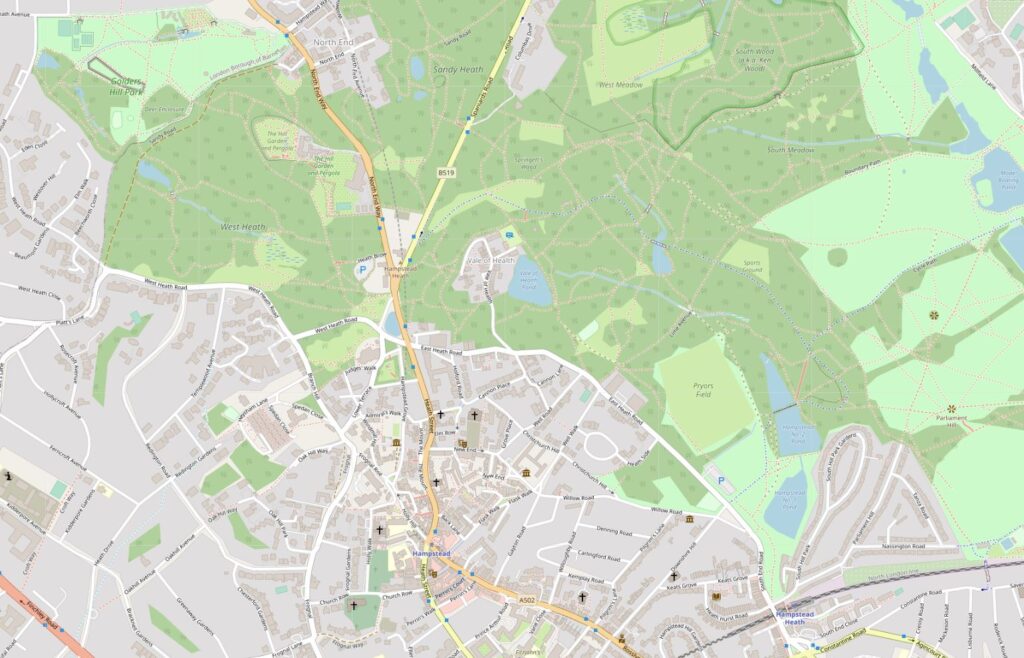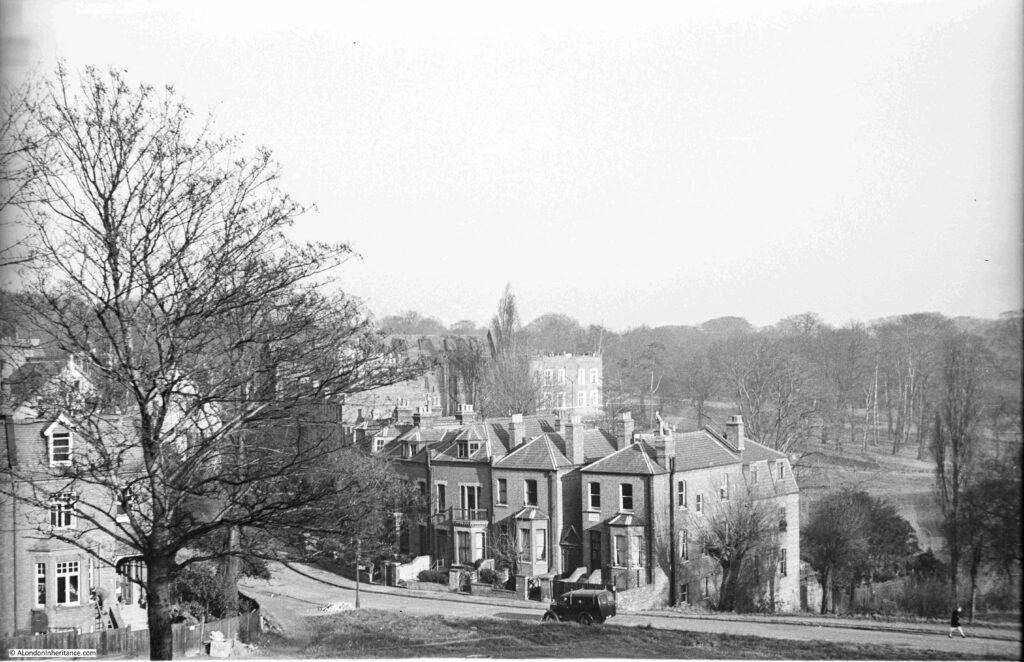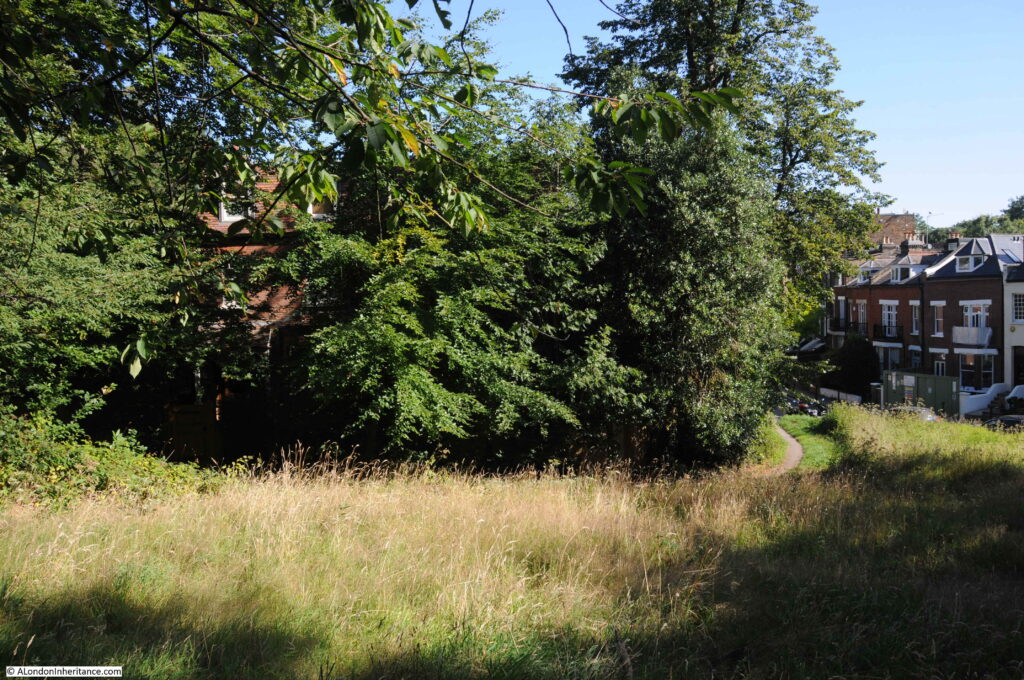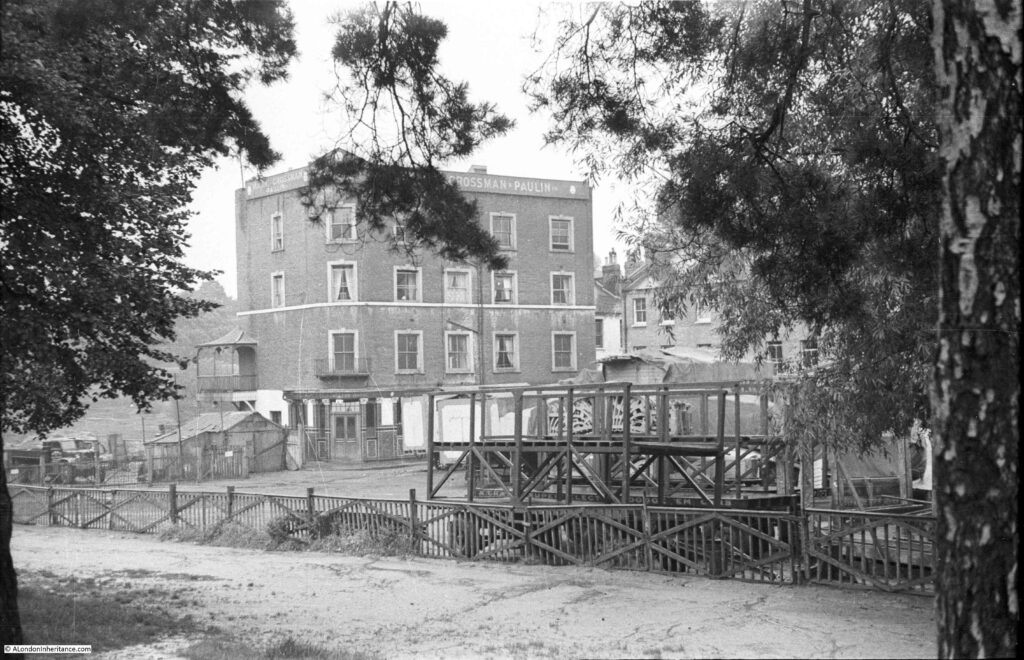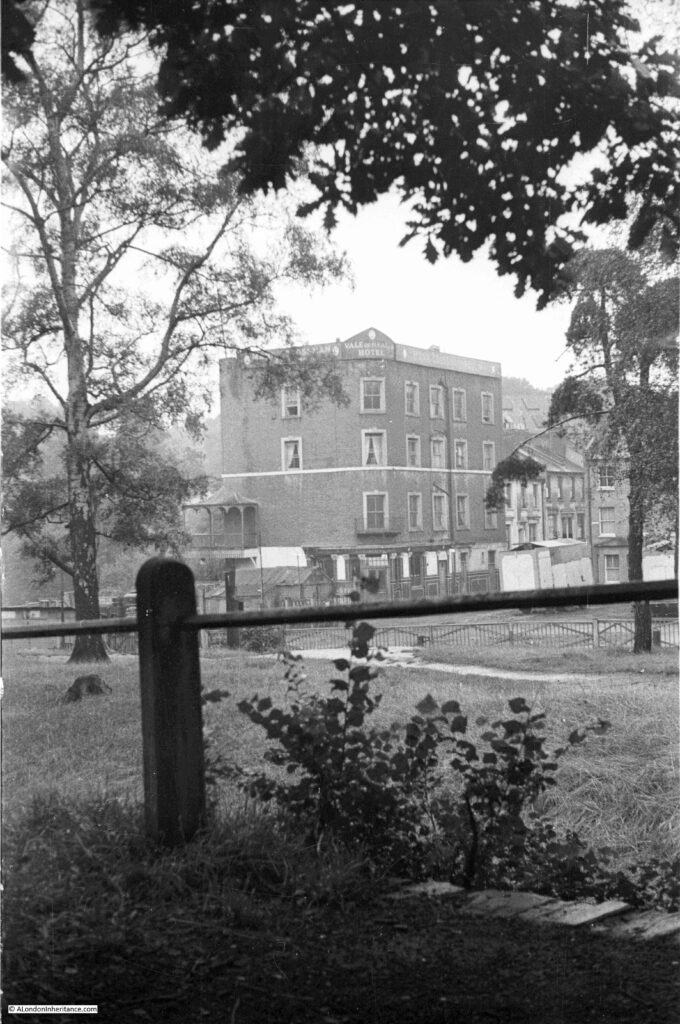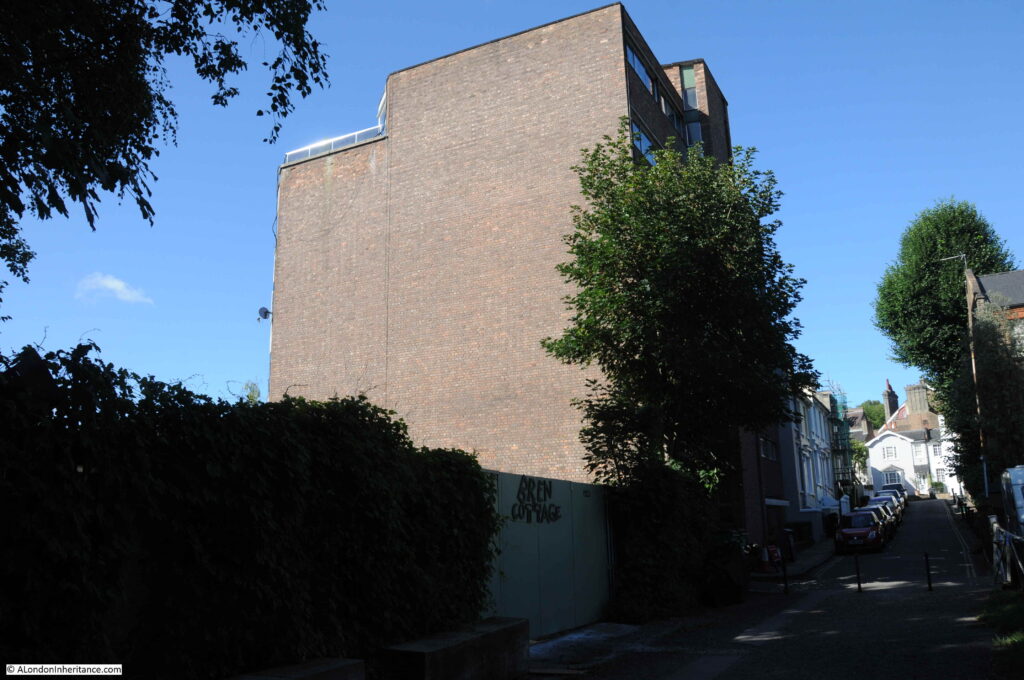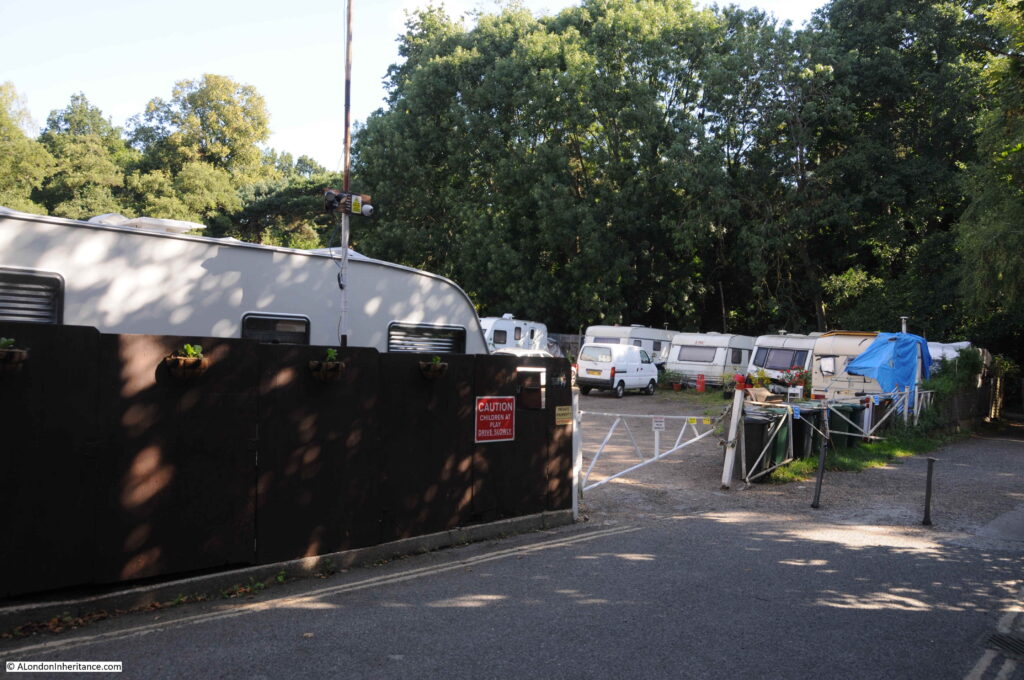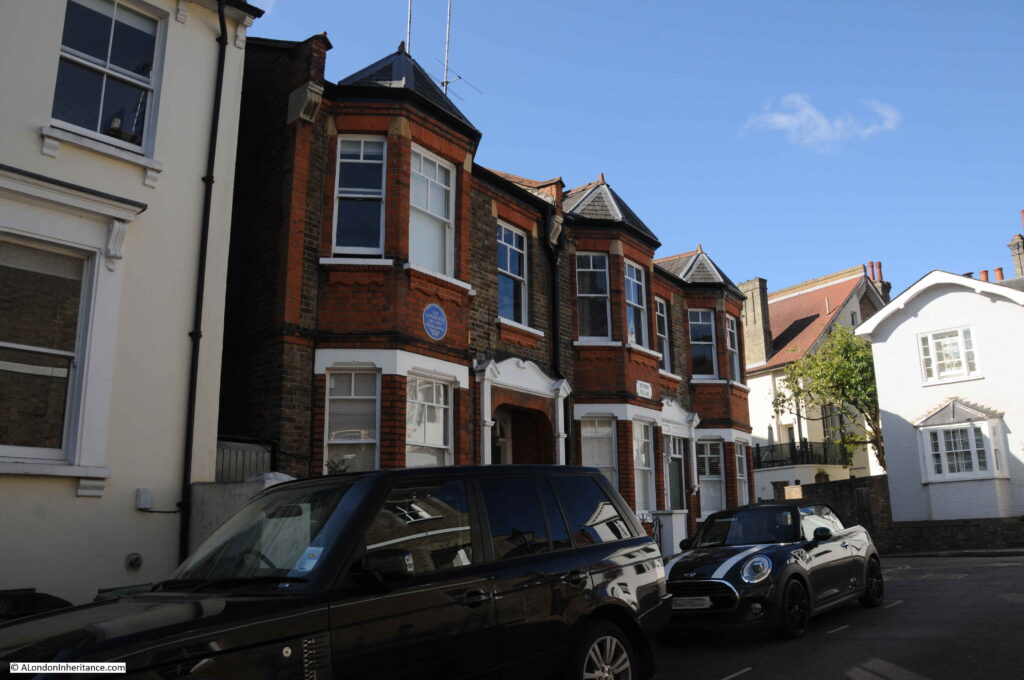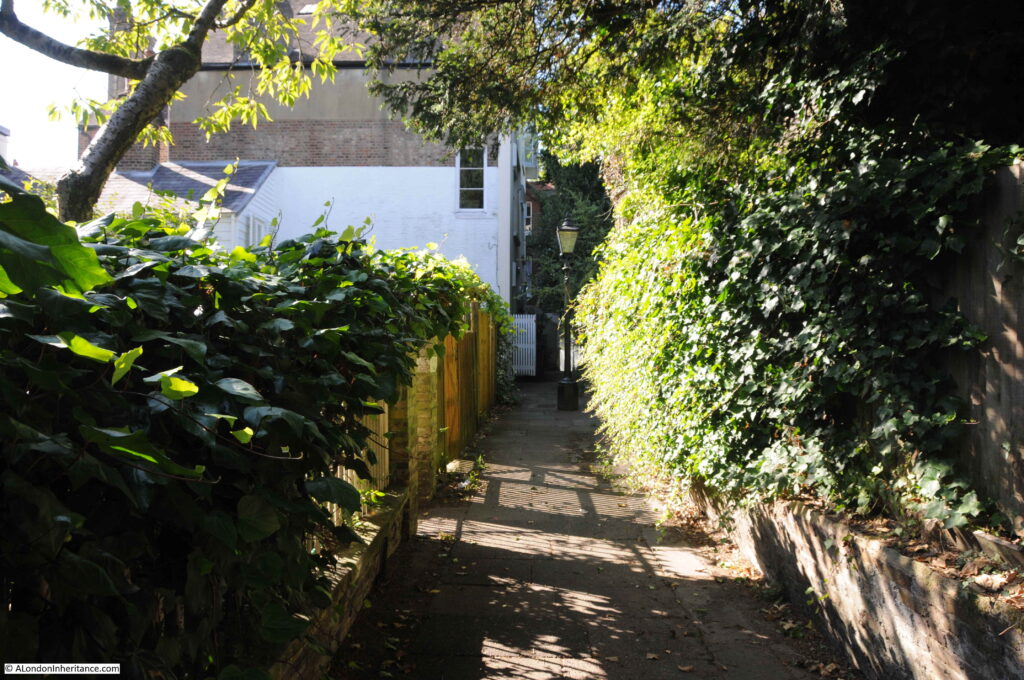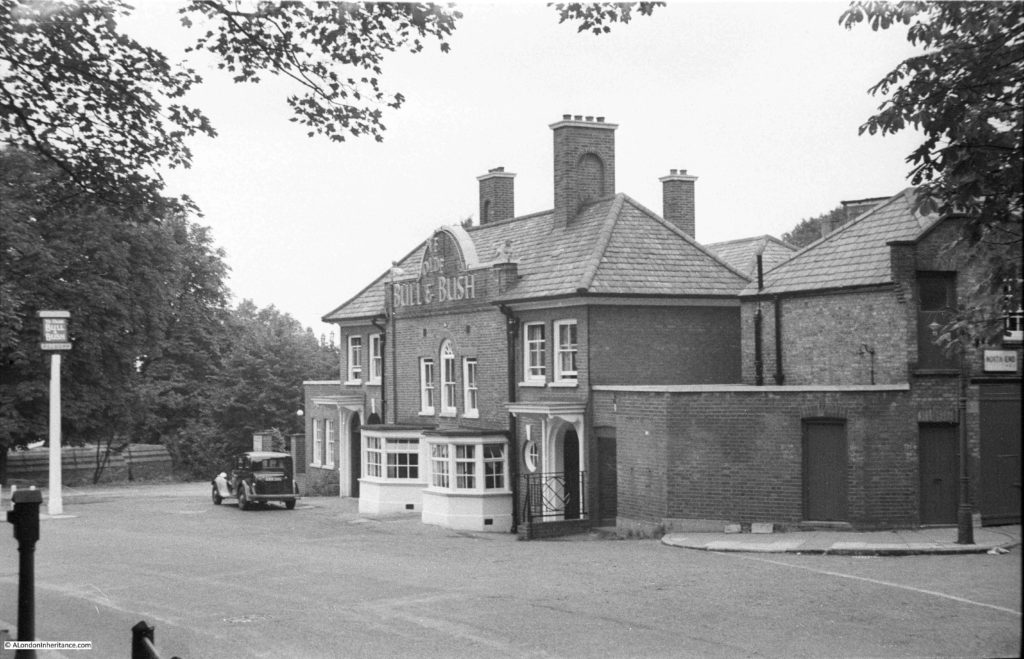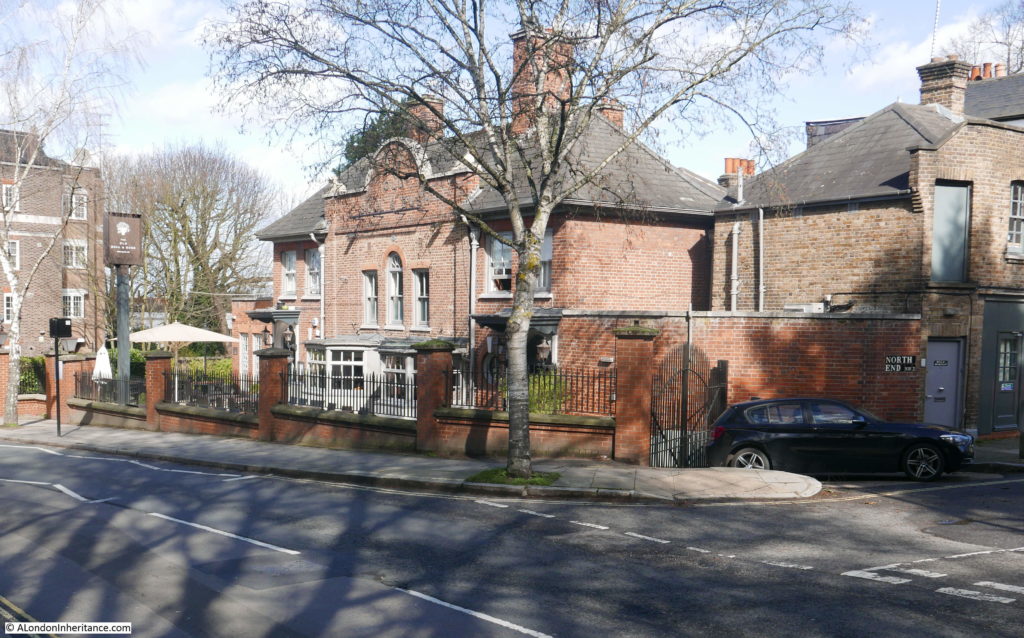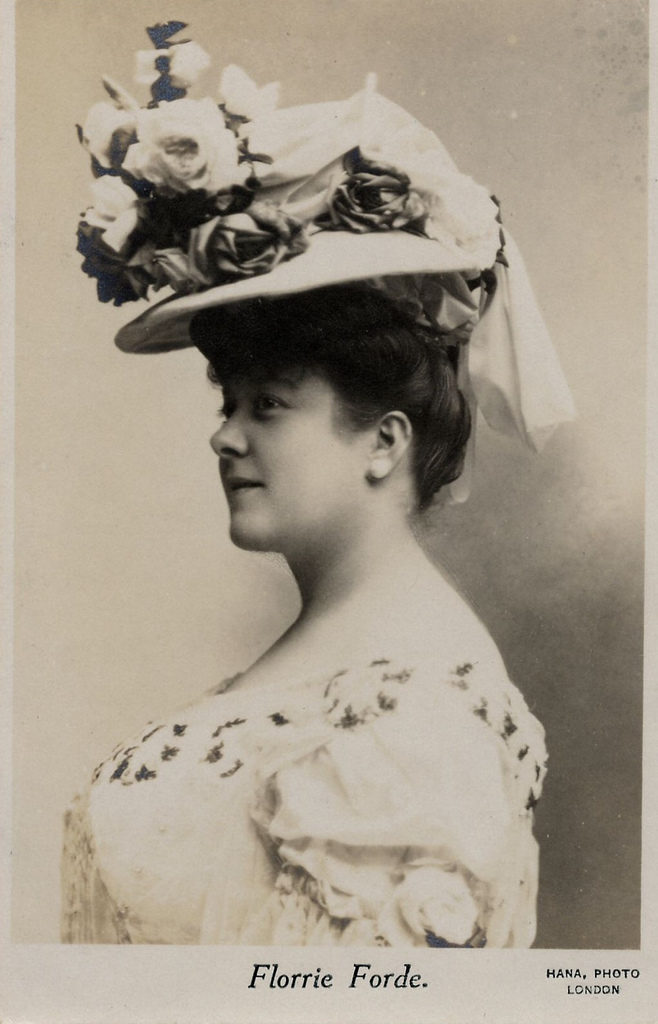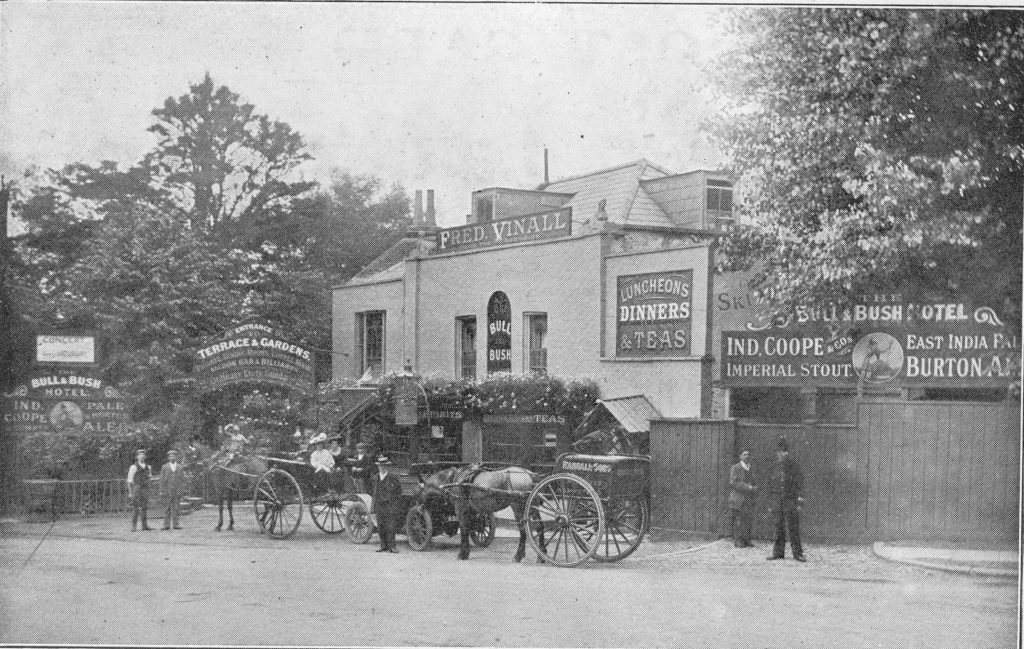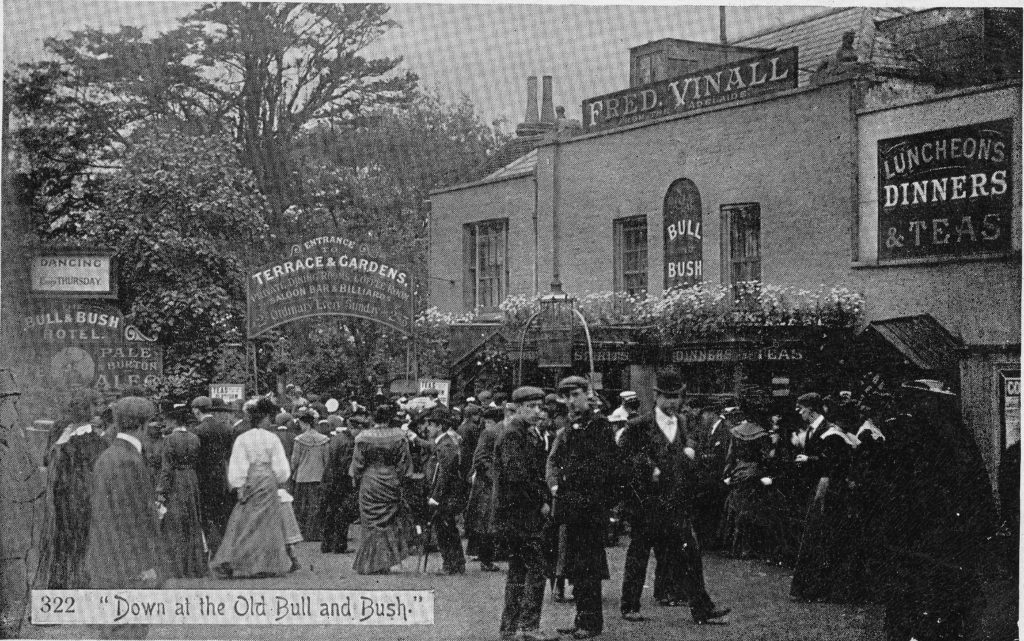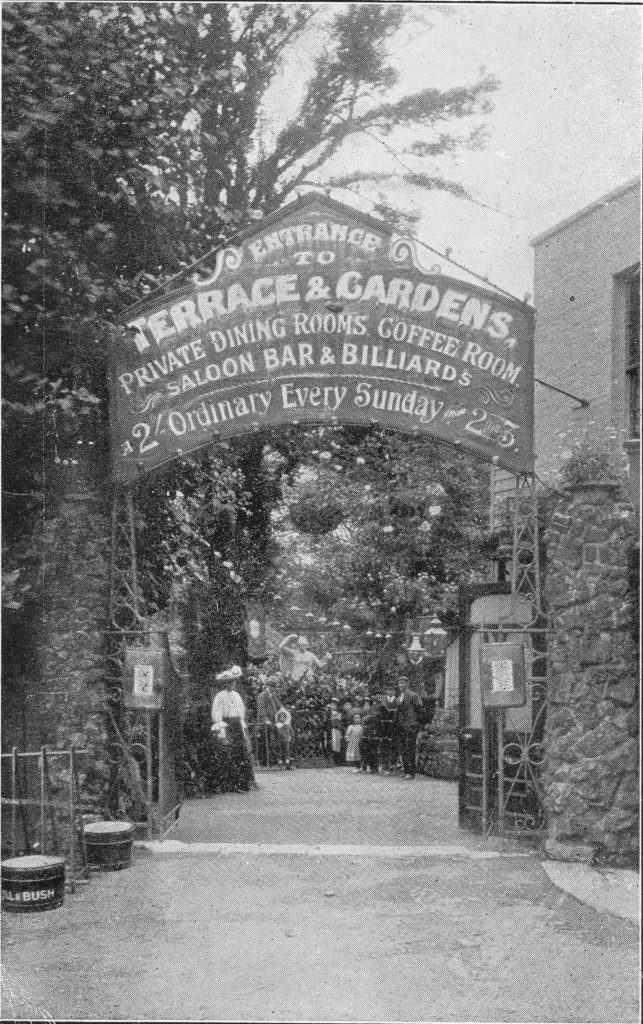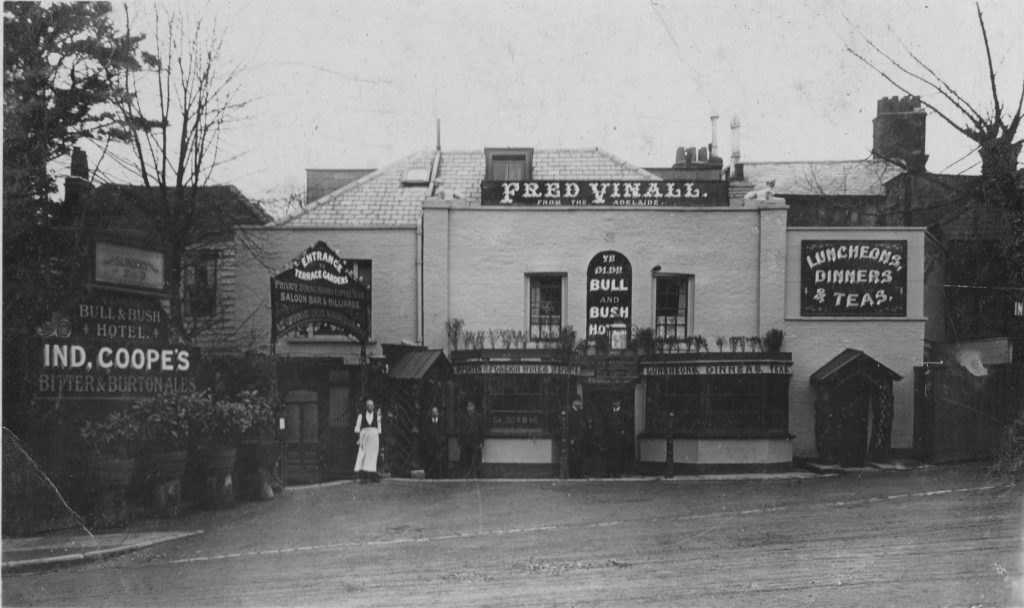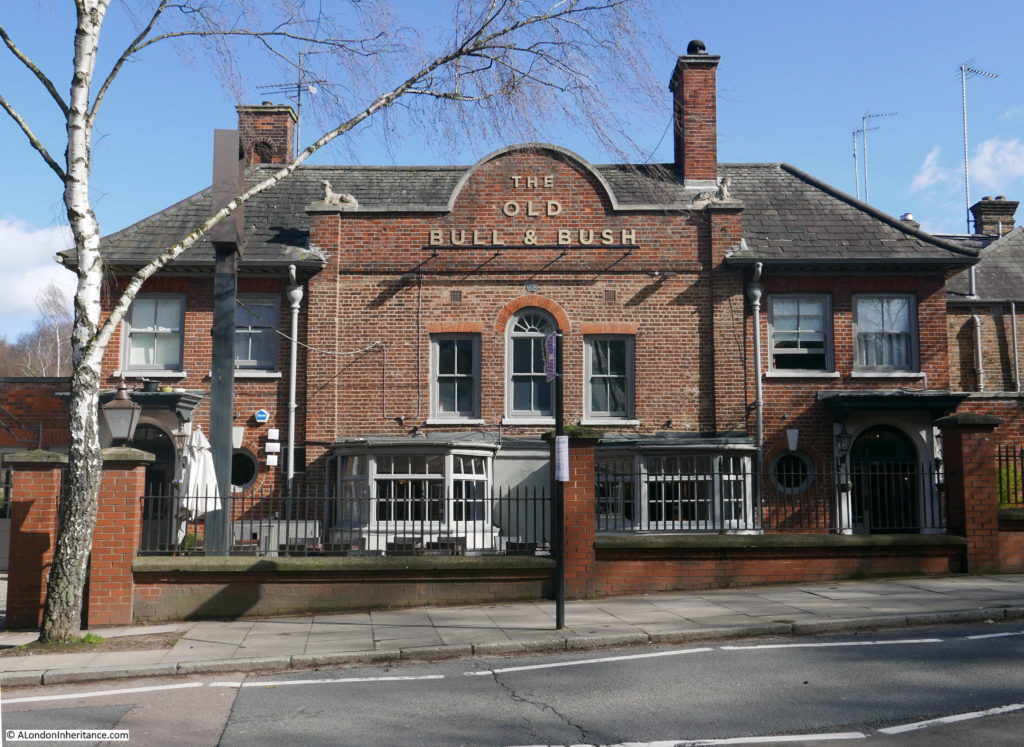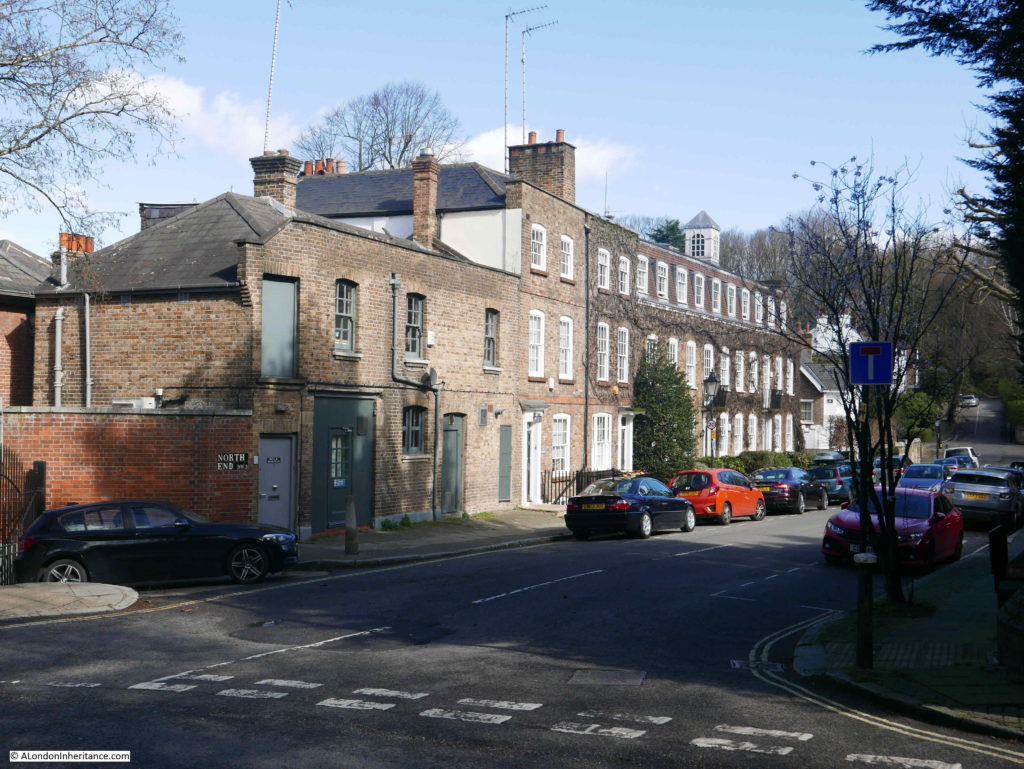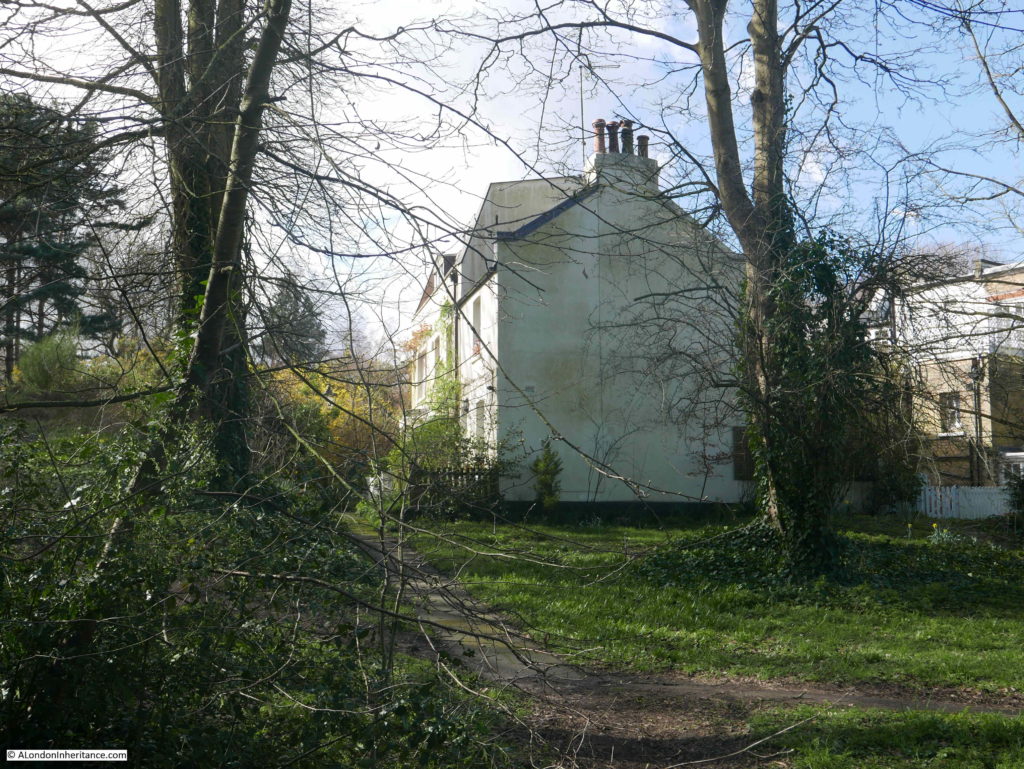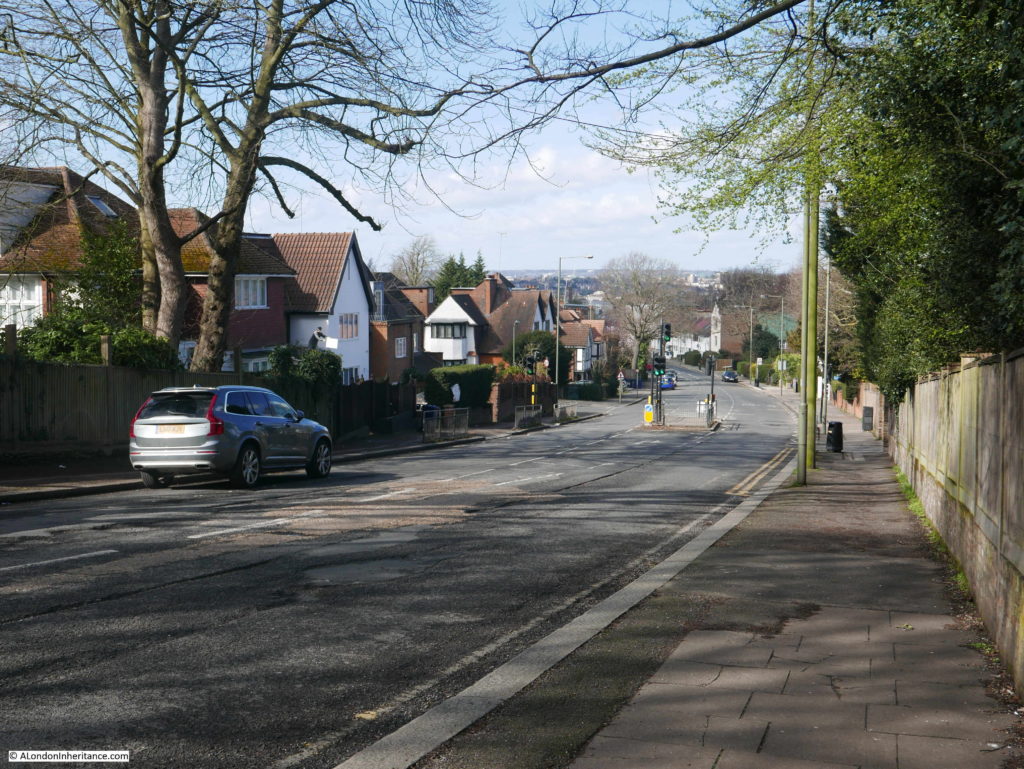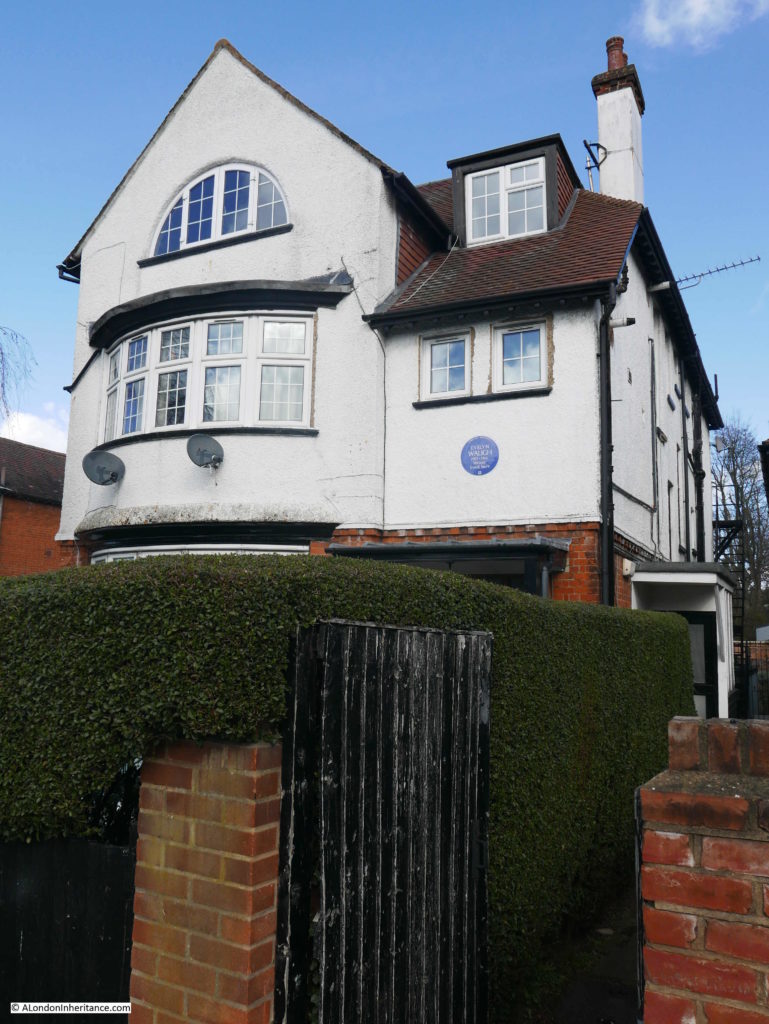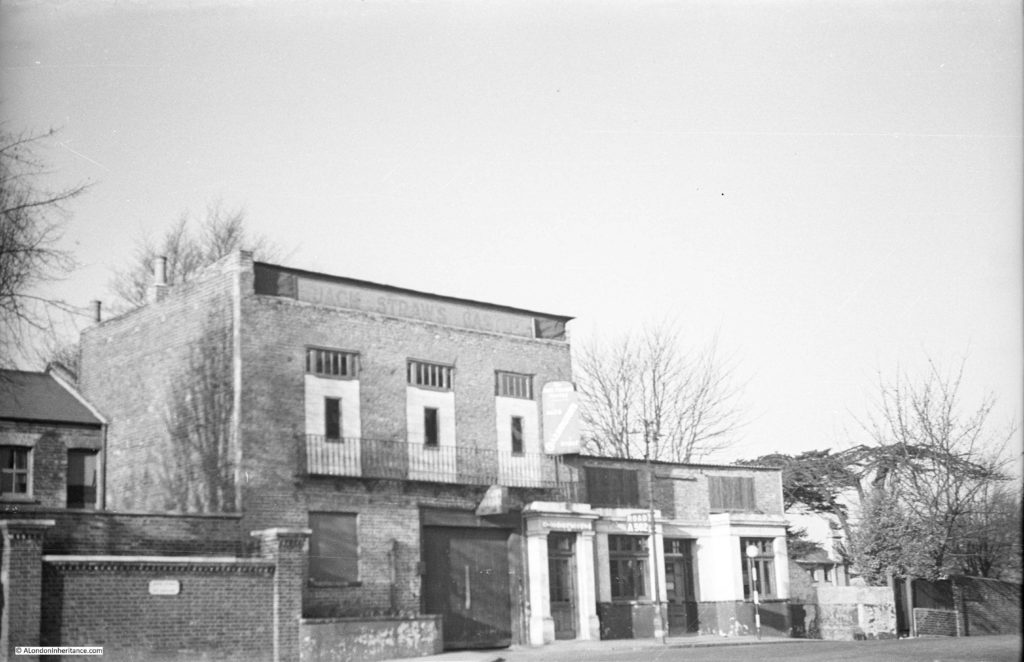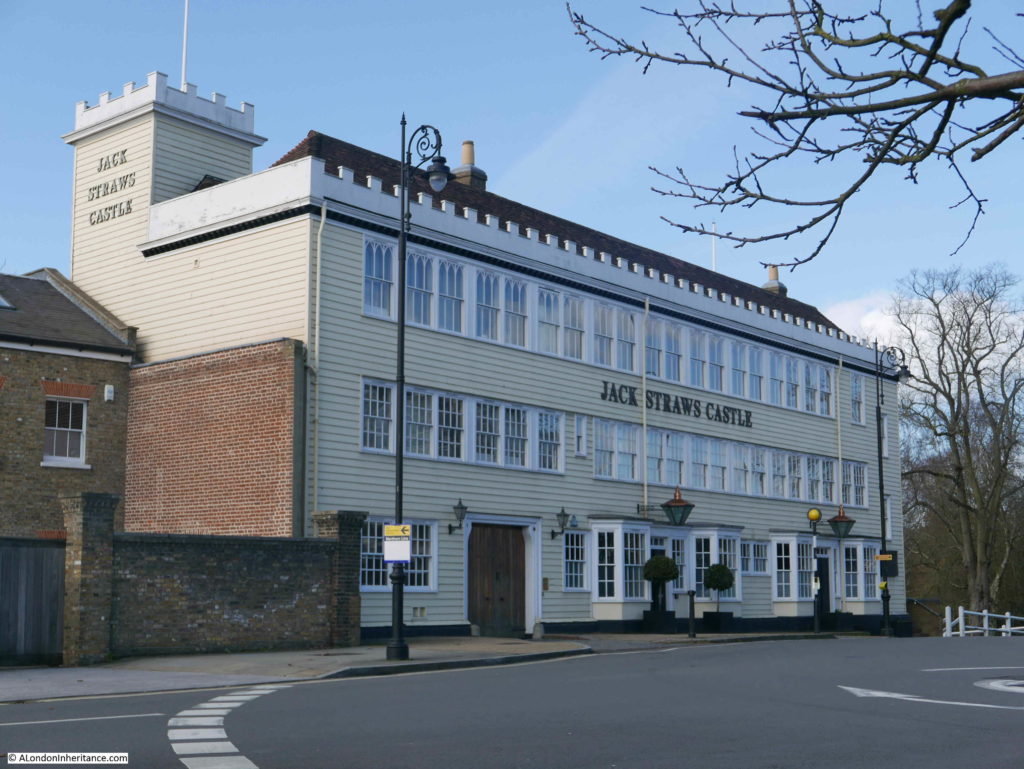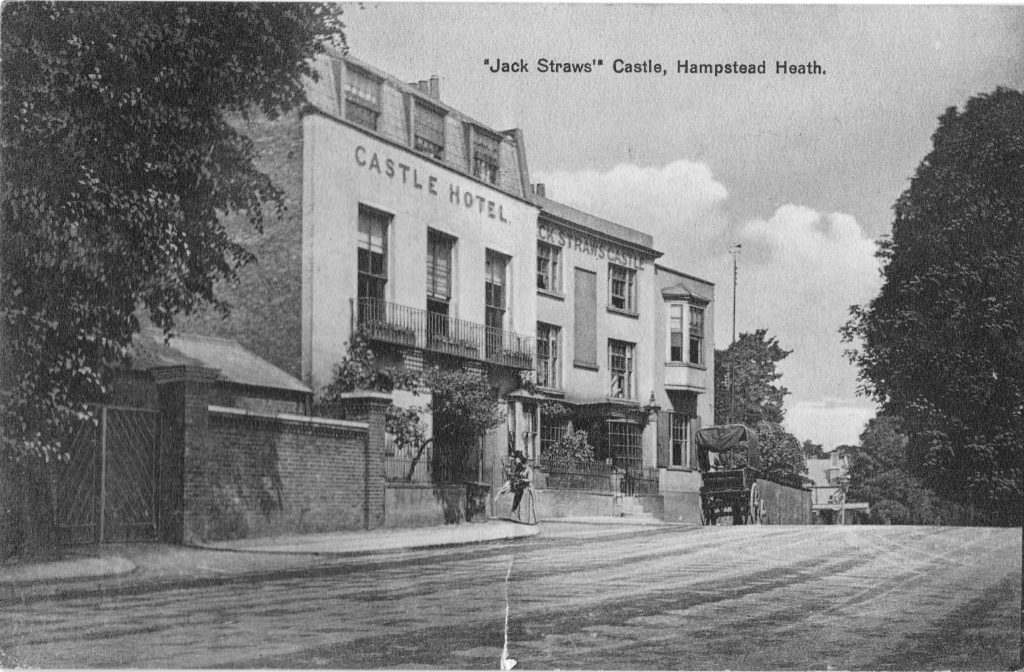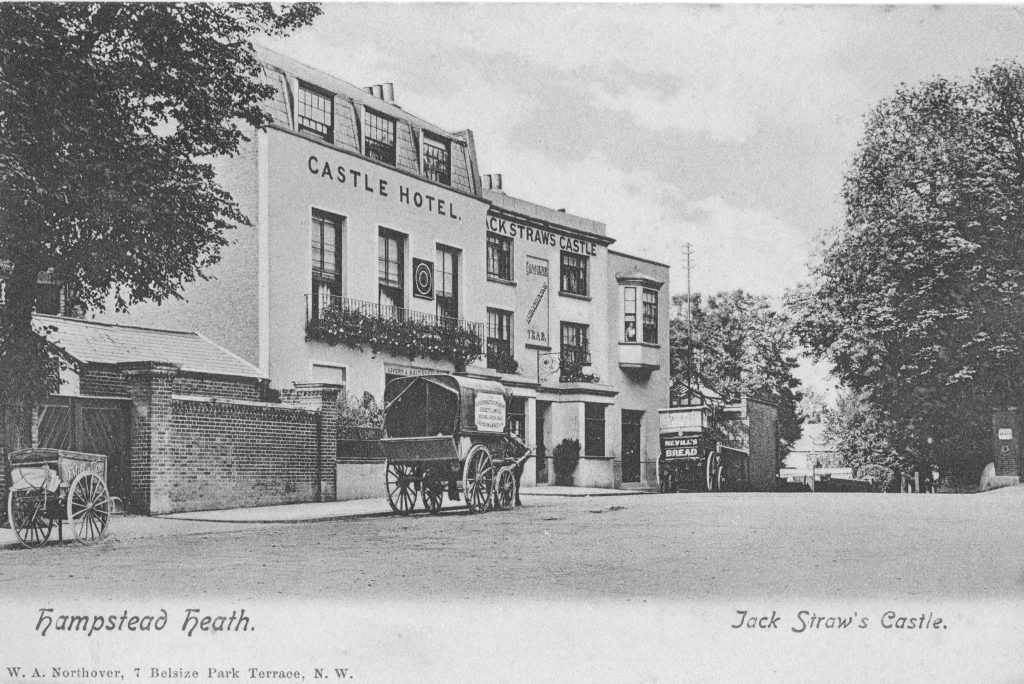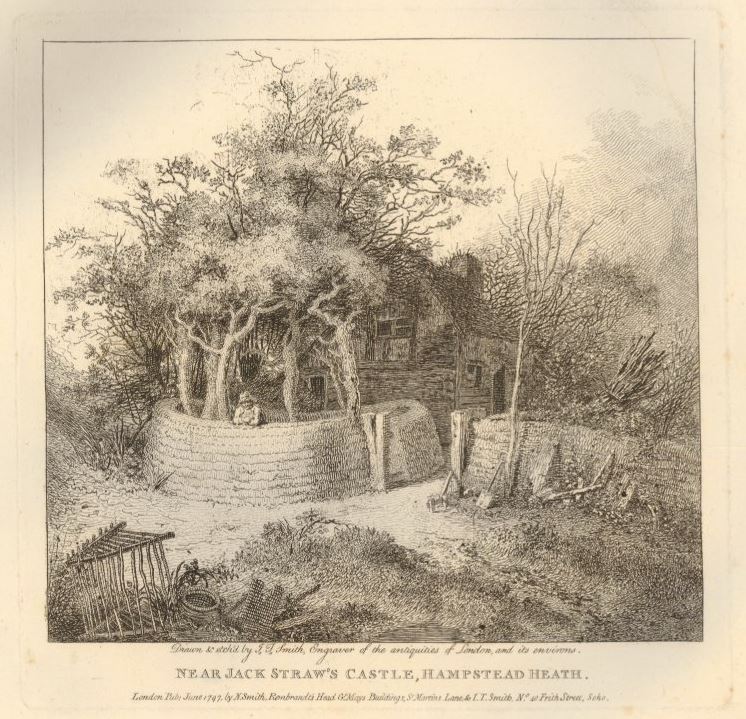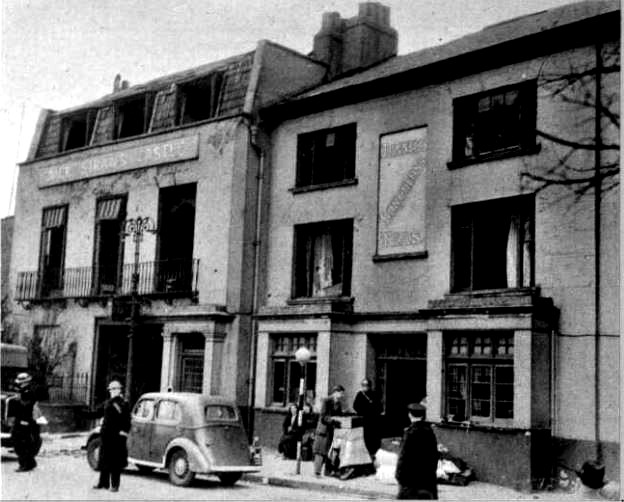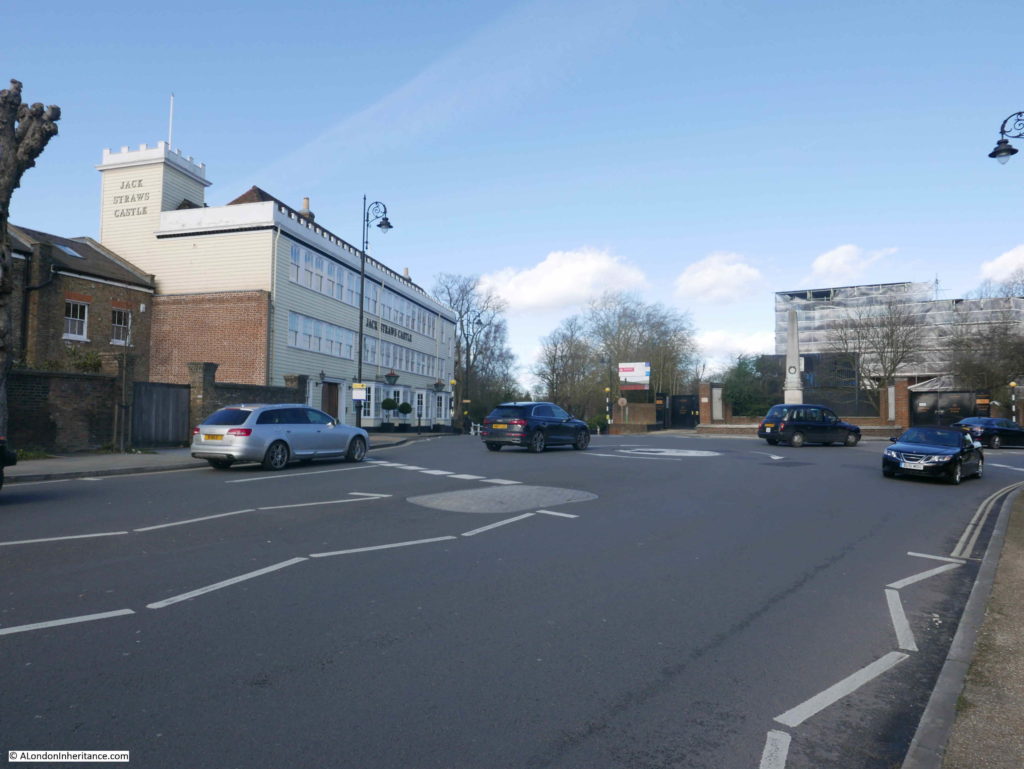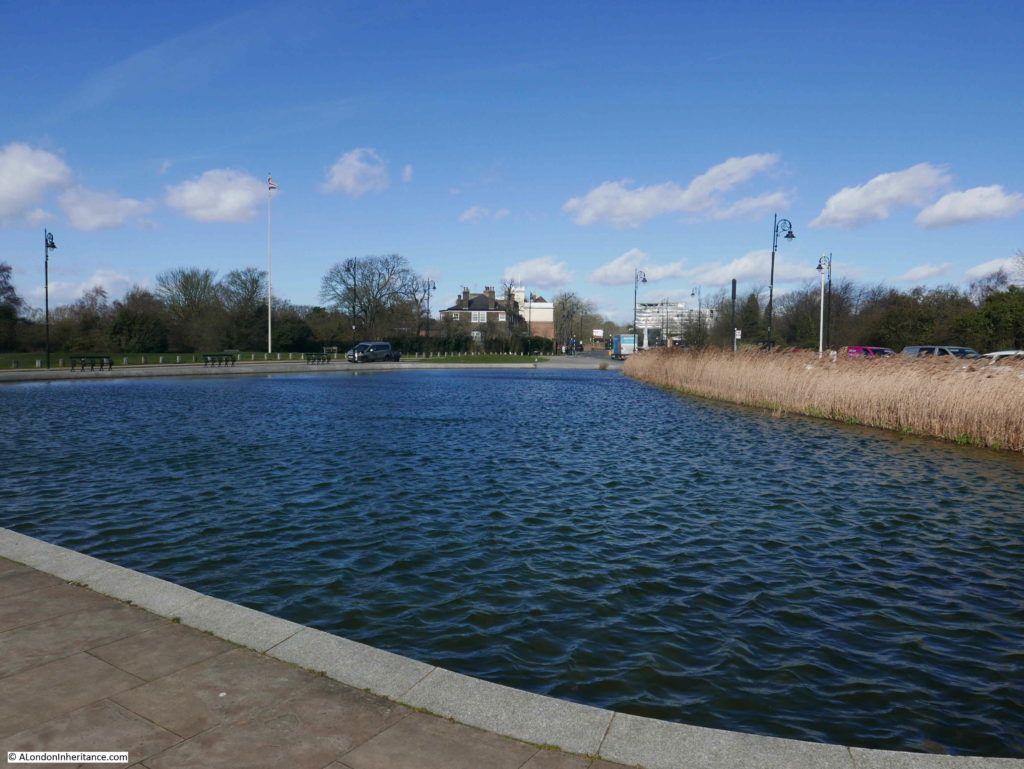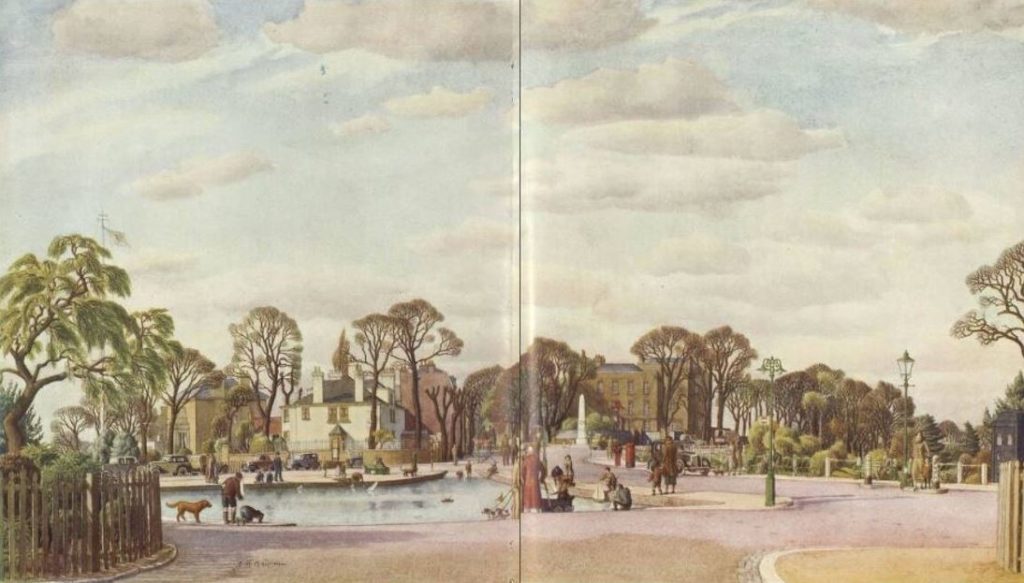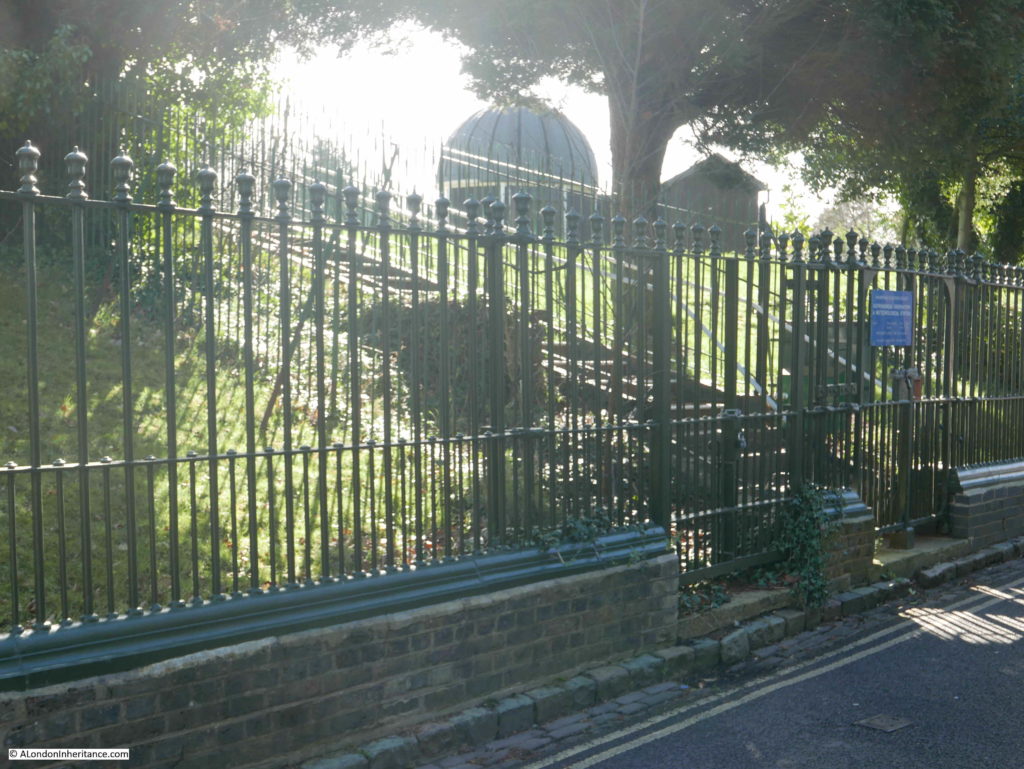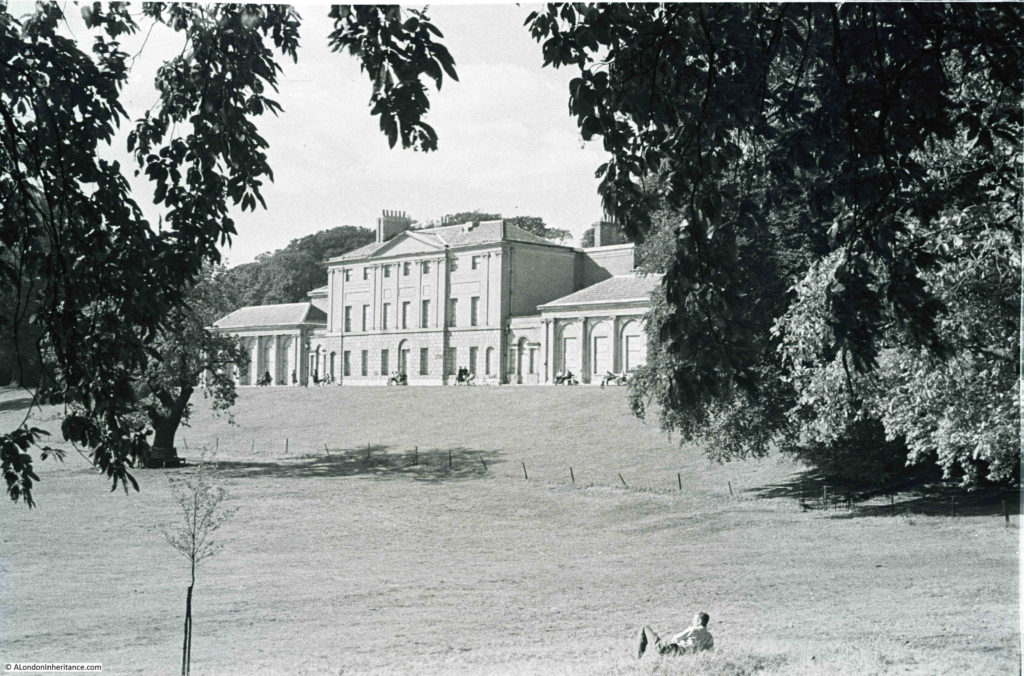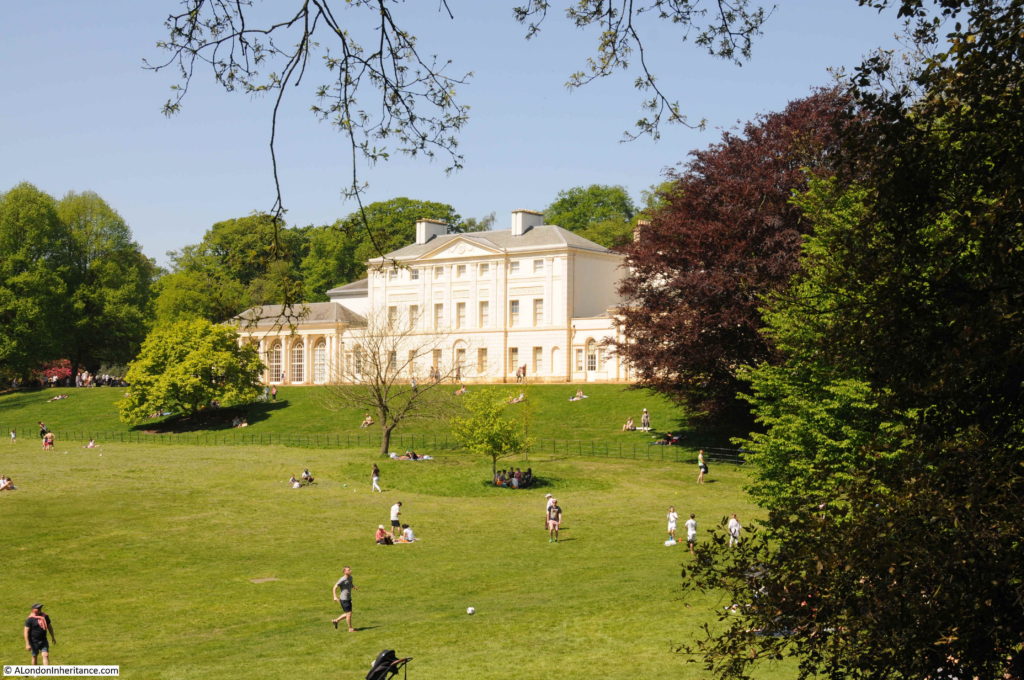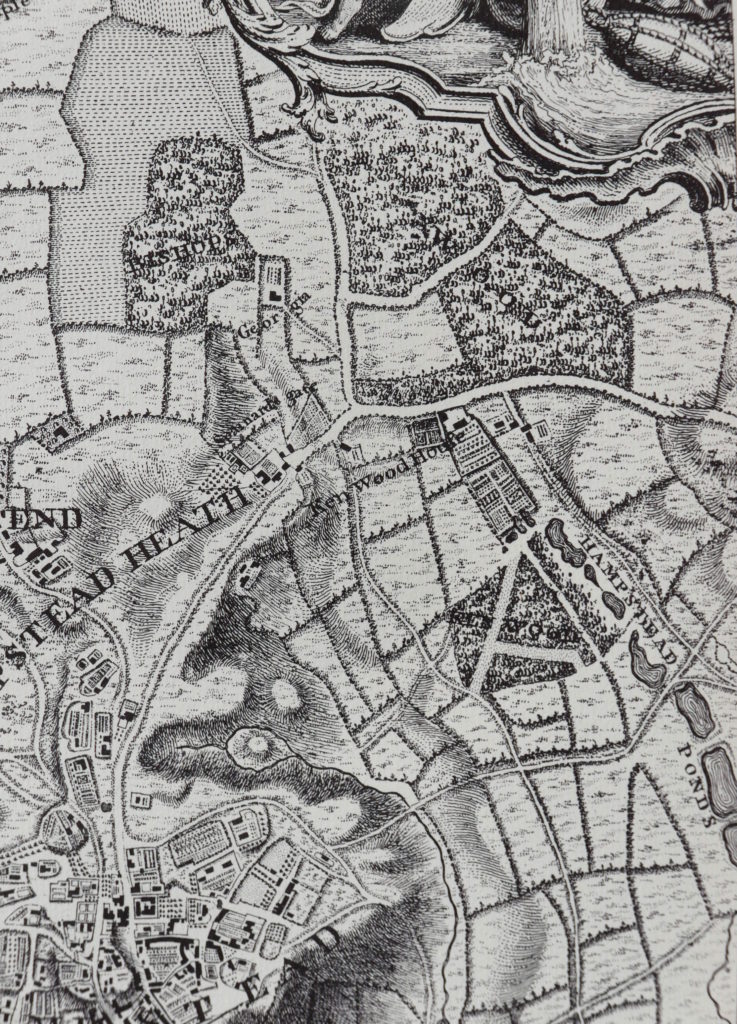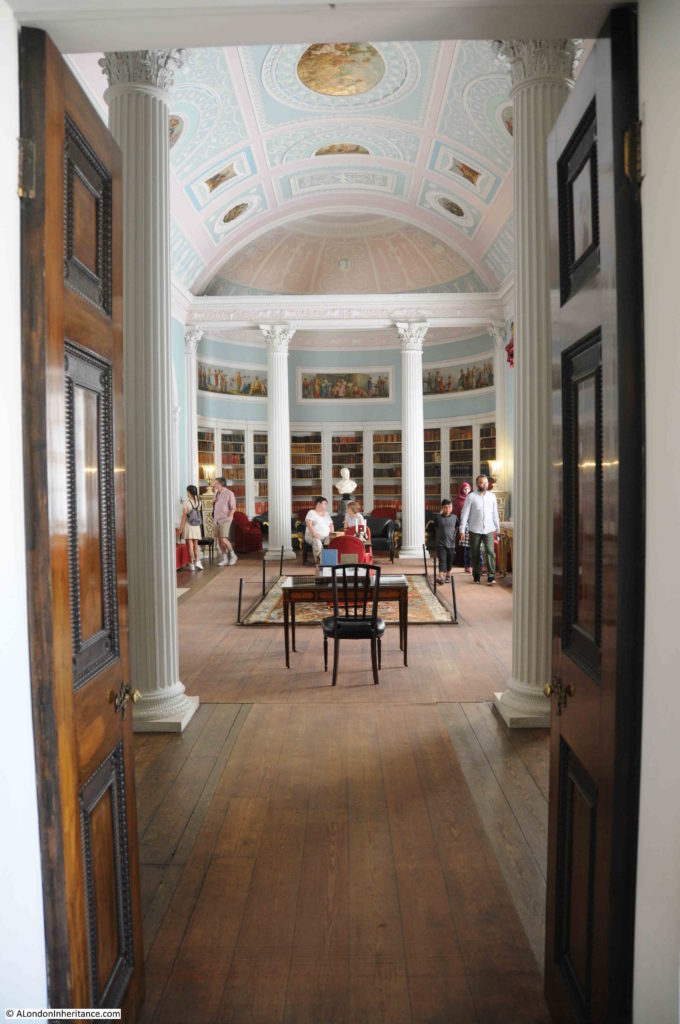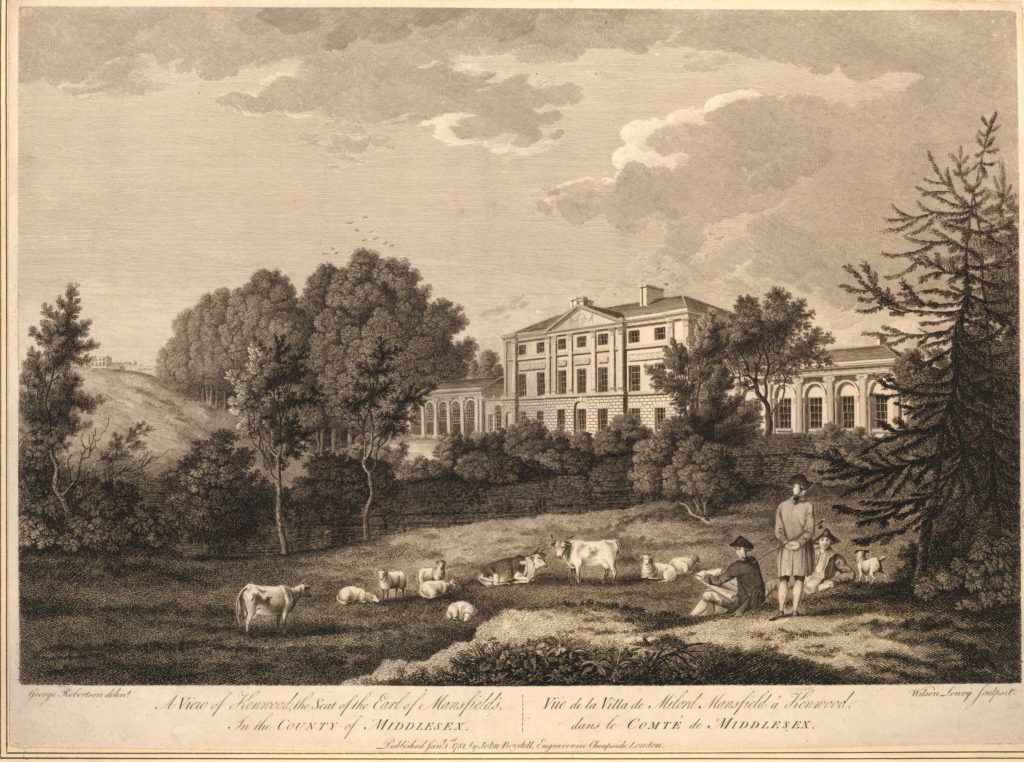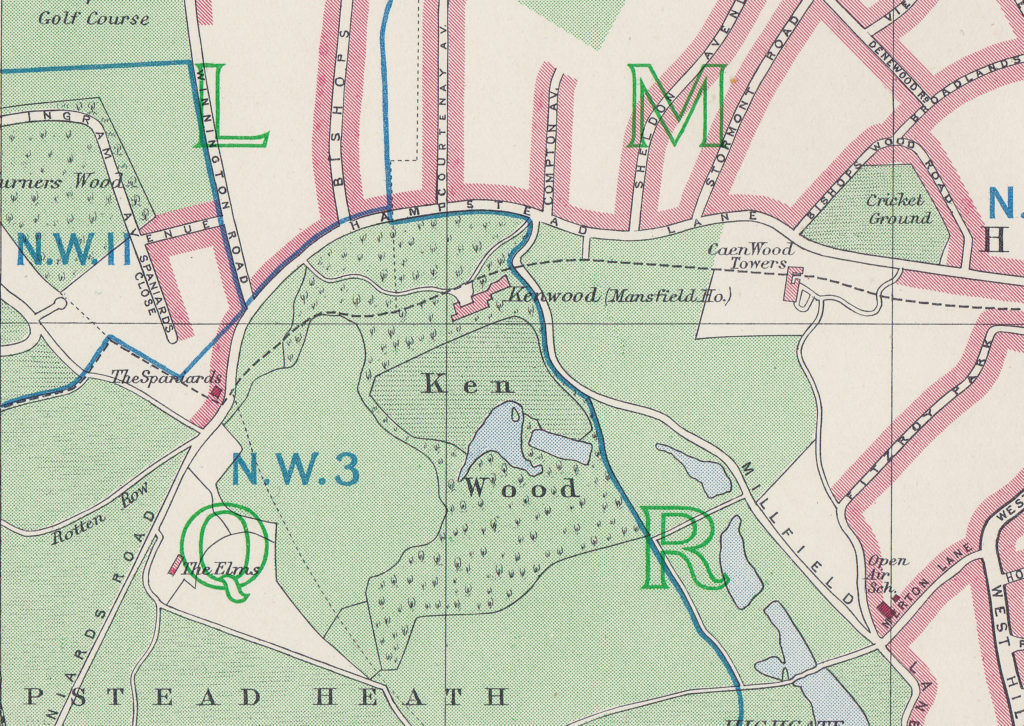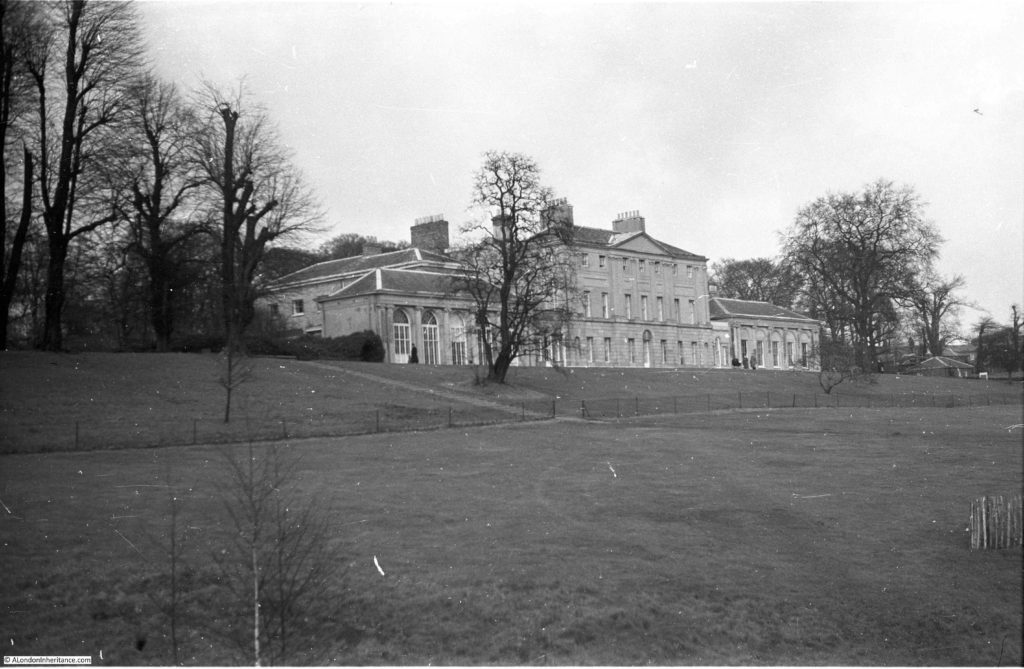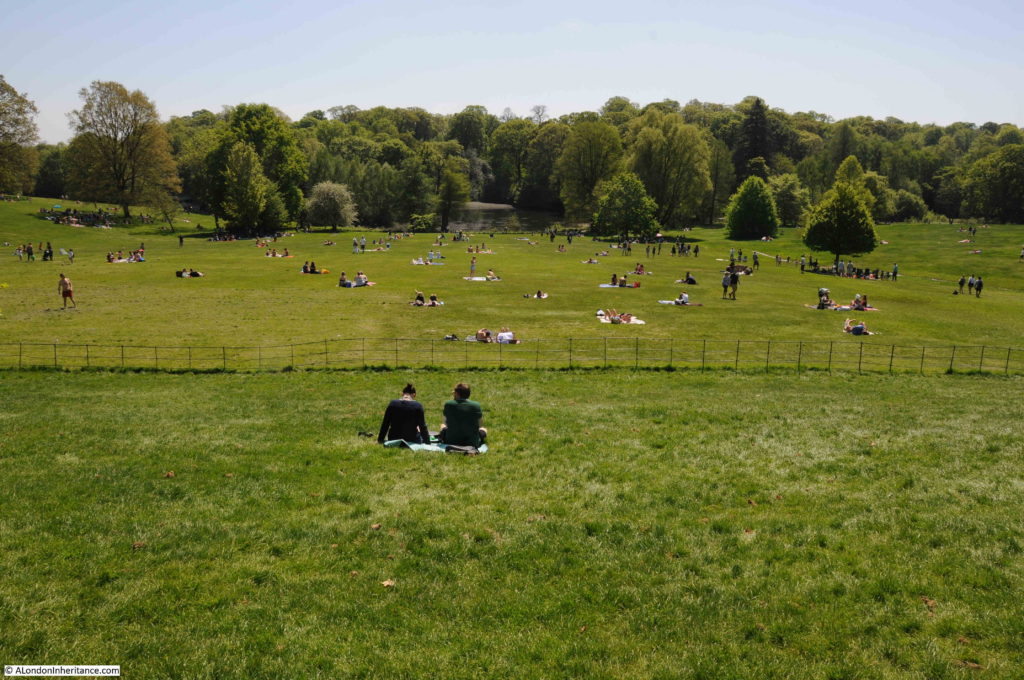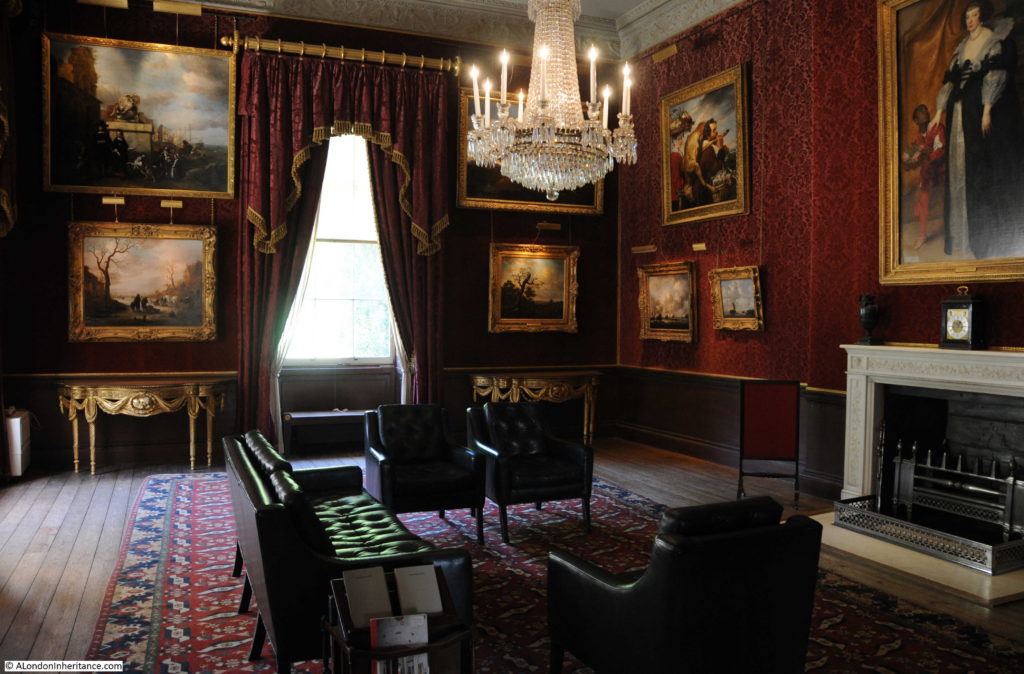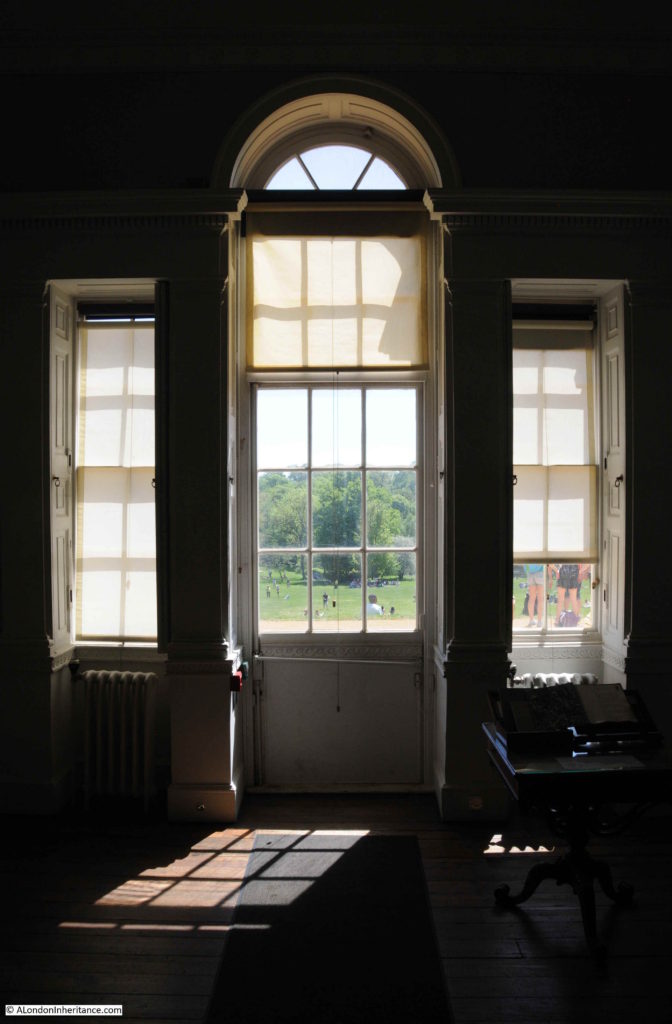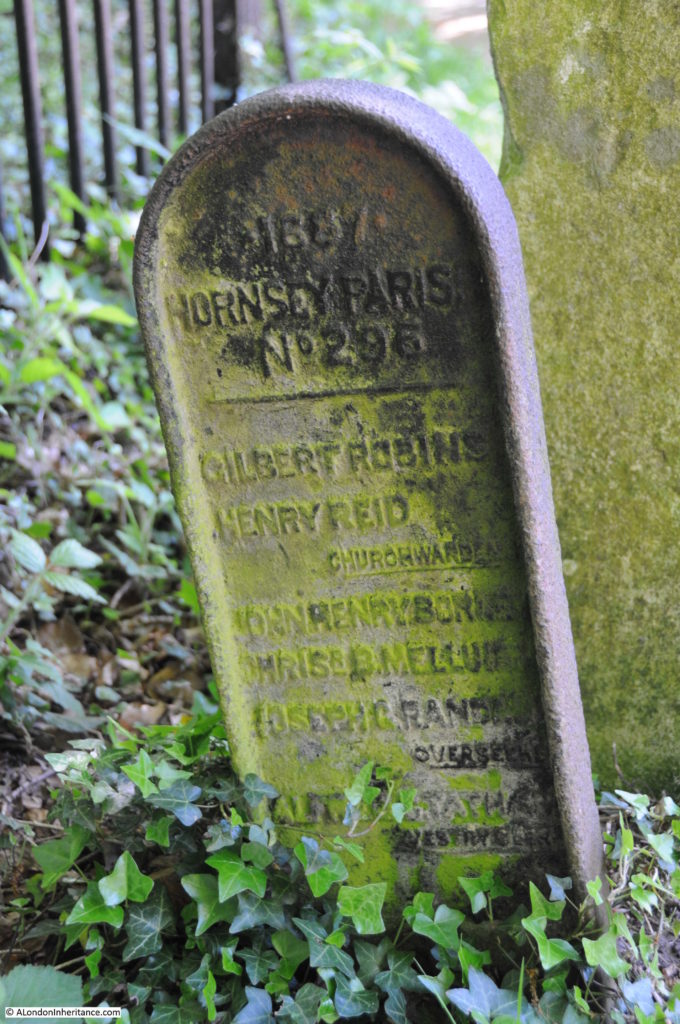Thanks for all the feedback to last week’s series of posts on Eleanor of Castile – very much appreciated. A very different post today, as I am visiting the site of one of my father’s photos, and this is of the Spaniards Inn in Hampstead, photographed in 1948:
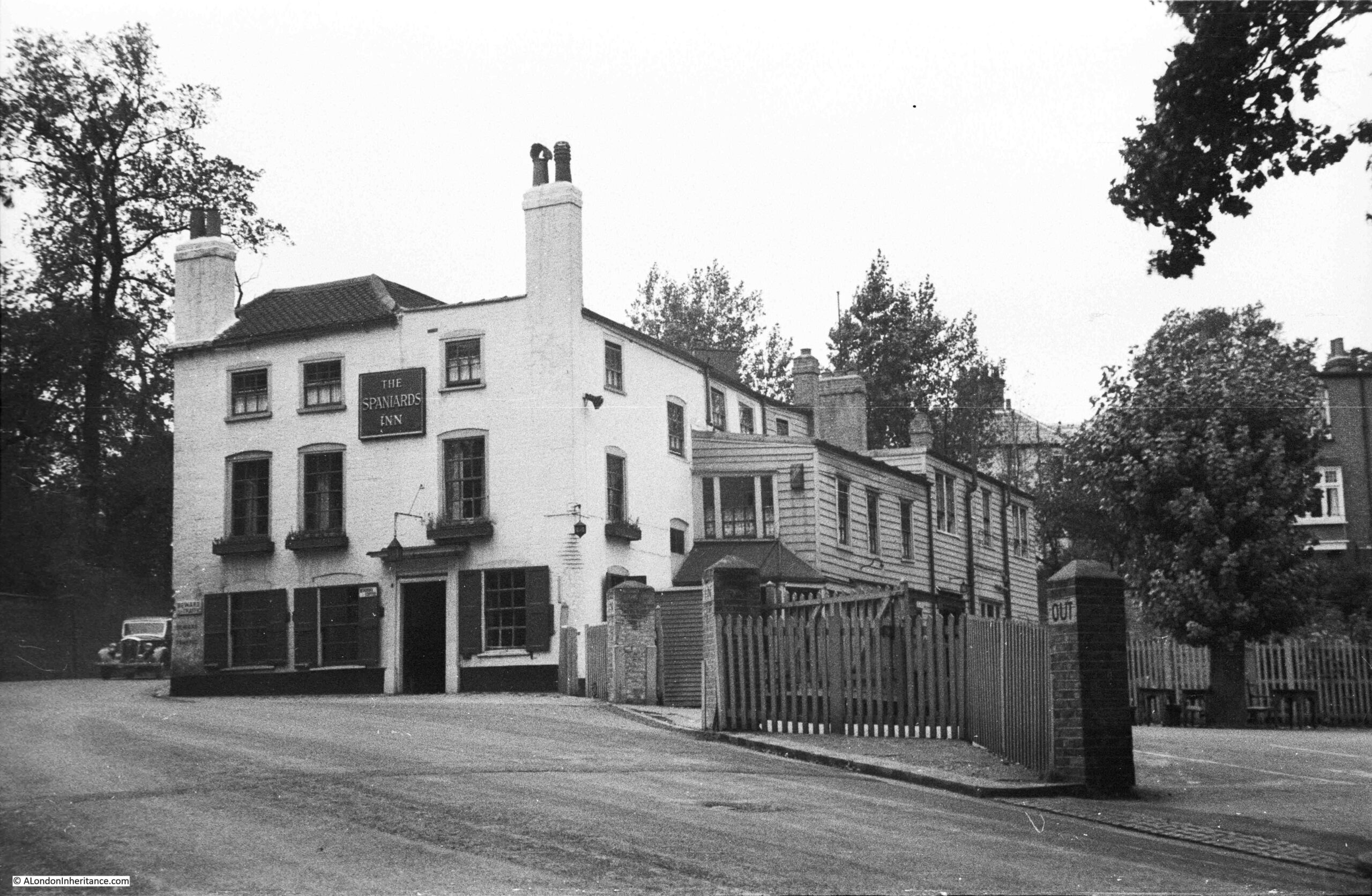
I had to be in Hampstead last week, so used the opportunity to cross this one off my list of my father’s photos to visit, however it was a misty, autumn day. I waited for much longer than the weather forecast predicted it would take for the mist to disappear, and finally had to take a misty comparison photo before I had to leave, so this is the same view today, a misty Spaniards Inn in 2022:

Different weather, different perspective due to very different cameras, and colour vs. black and white, however, look past that and the two views are almost identical across 74 years.
Even the small triangular pavement between the two car park entrances is still the same. The cars approaching along the road from behind the pub are though very different.
The Spaniards is a very old pub, believed to date back to the 16th century.
As with any pub of such age, there are plenty of stories about the pub, many of which have been repeated in newspapers and books for at least the last 150 years, so may well have a grain of truth.
Regarding the name, I have read two different accounts, firstly that there may have been two Spanish owners of the pub, who killed each other in a duel, secondly, that the pub was named after the Spanish Ambassador to James II.
There are stories that the highwayman Dick Turpin used the pub, and kept his horse in one of the buildings.
What does seem to be true is that the pub played a role in the Gordon Riots. This was in June 1780 when there were violent anti-Catholic riots in London. At the time, Kenwood House, not far from the Spaniards, was the home of the Earl of Mansfield, the Lord Chief Justice. He was rumoured to have pro-Catholic sympathies, so the rioters set out from central London with the intention of burning down Mansfield’s Kenwood House.
The rioters stopped in the large gardens of the Spaniards Inn, and the landlord, along with the Earl of Mansfield’s steward gave the rioters large amount of drink, which gave them time to summon soldiers, and by the time they arrived, the rioters were in no fit state to resist.
The Spaniards Inn also features in Dickens’ book, Pickwick papers where Mrs. Bardell and her friends take the Hampstead Stage to the Spaniards Tea Gardens. The Inn is also mentioned in Bram Stoker’s Dracula, where the vampire hunter Van Helsing, after having supper in Jack Straws Castle, then: “By good chance we got a cab near the “Spaniards,” and drove to town.”
Many of the literary and artistic inhabitants of, and visitors to Hampstead are believed to have visited the Spaniards Inn, including Keats, Shelley, Byron, Hogarth and Constable.
I walked to the Spaniards Inn from Hampstead, firstly walking up to Spaniards Road, where there is one of type of street signs that can be found across Hampstead, which also has a pointing hand symbol indicating the direction to Highgate.

The road between Hampstead and Highgate runs along the north and north-western borders of the heath, and the Spaniards Inn can be found at roughly the half way point along the heath’s border. Spaniards Road runs up to the inn, and soon after the road changes name to Hampstead Lane – one of the indicators that the inn has long formed a boundary between Hampstead and Highgate.
The location of the Spaniards Inn is circled in the following map (© OpenStreetMap contributors):

My father’s photo shows the corner of the Spaniards Inn directly on the road, with a car just coming from behind the pub. To discover why the inn is at such a historic location, we need to zoom out to a wider view of the road that runs to the side of the inn:
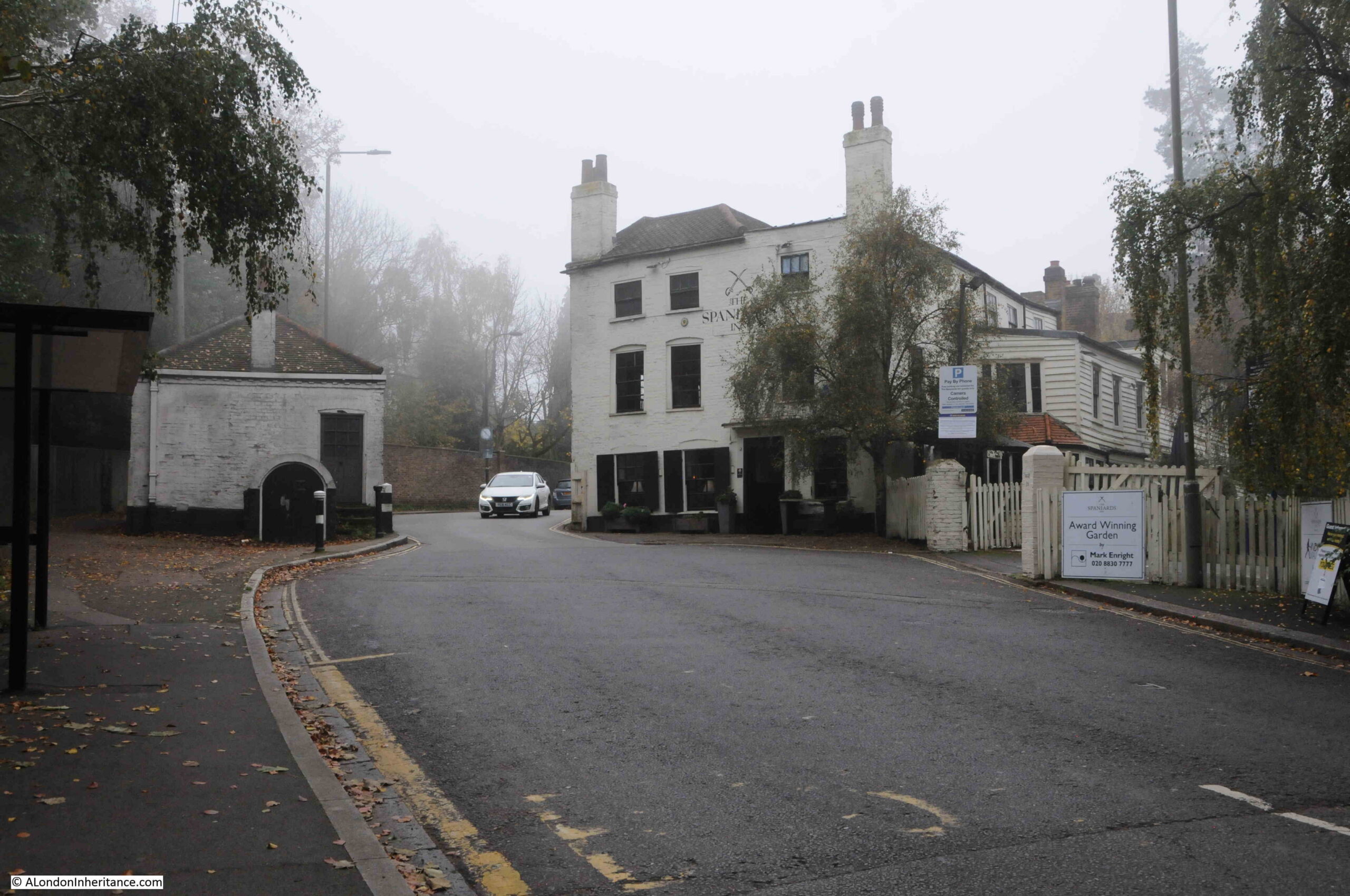
As the road passes the Spaniards Inn, it narrows and bends around the corner of the inn. On the opposite side of the road is a small square building.
This point in the road was the location of a toll gate, and travelers had to pay a toll when passing along the road in the direction of Highgate, as the land to the west of the tollgate was owned by the Bishops of London.
The square building on the opposite side of the road was the 18th century toll gate house.
The Spaniards Inn and the toll gate feature in John Rocque’s 1746 map of London.
In the following extract, I have circled the location of the inn and the gate:

I love the detail that can be found in Rocque’s maps. In the map below, I have zoomed in on the location of the inn and the toll gate. Where the toll gate is located, there is a dotted line across the street (see red arrow), which I assume is a representation of the gate that would have barred the street to allow collection of tolls.
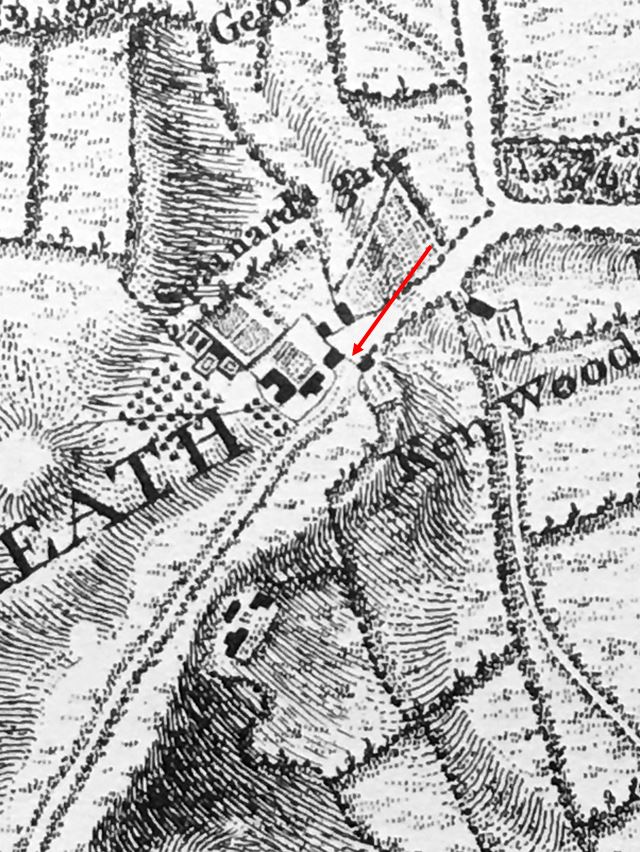
The name Spaniards Gate can be seen above, implying that the gate took the name from the inn. one interesting feature is the way the road is represented on either side of the toll gate. To the right of the toll gate is the Bishop of London’s land. The road looks wider and more defined. To the left of the gate, the road is narrow and seems more like a track.
The toll was collected when you travelled into the Bishops of London land, moving left to right in the above map, and when you passed through the gate, you also started to travel on better roads. Even today, the road widens soon after passing the toll gate heading to the east.
The following print from around 1840 shows a very similar scene to today, although the road and traffic along the road are very different (© The Trustees of the British Museum).
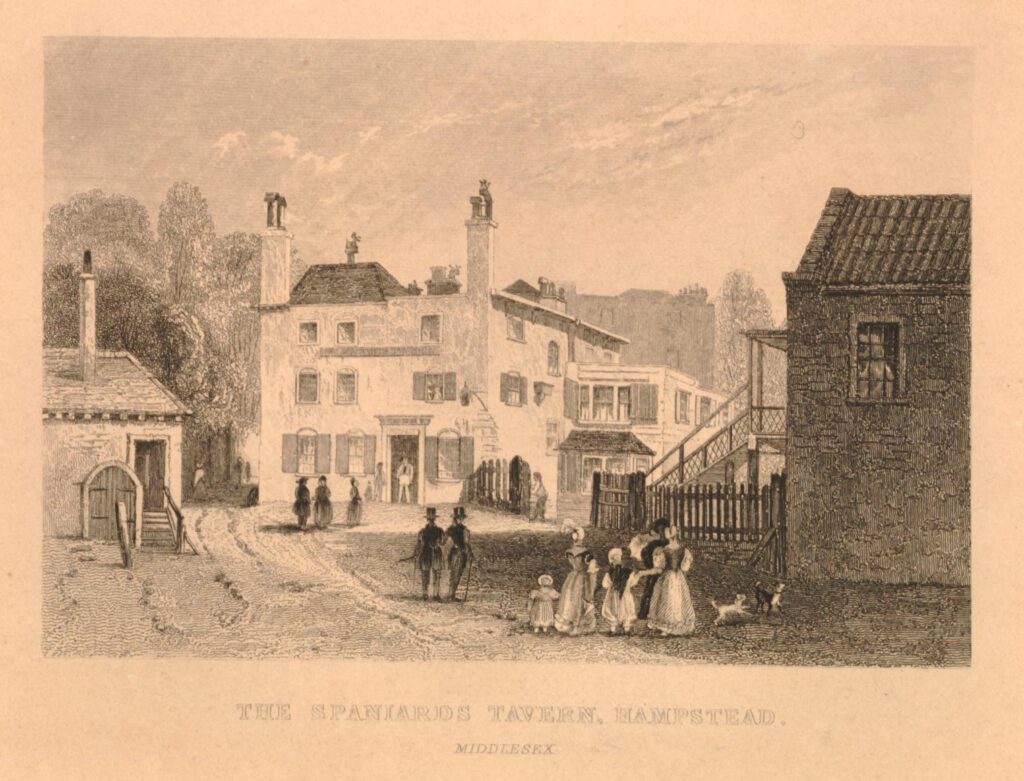
As the road between Hampstead and Highgate passes the Spaniards Inn, traffic has to slow as there is not really enough space for two cars to pass through the gap.
The road is a busy road with an almost continuous stream of traffic. It took a while to get some reasonably traffic free photos.
it is remarkable that the toll gate house, and the narrow width of the road has remained as traffic has increased. There have been a number of attempts to remove the toll gate house, and widen the road, for example, one hundred years ago, the Hampstead and St John’s Wood Advertiser on the 14th of December 1922 reported that:
“The proposal to widen the road where it forms a sort of bottle-neck by the Spaniards Inn at the Highgate end of Hampstead Heath, if carried out, would probably mean a destruction of the famous old tavern, and the little brick building that stands opposite to it, on the Kenwood side of the road. In spite of the great volume of traffic on the Spaniards-road itself, on high days and holidays, it is not really a main thoroughfare to anywhere.”
The 1922 proposal to widen the road did not make any progress, and almost 40 years later, in 1961 there was another attempt, as reported in the Hampstead News, Golders Green Gazette and Journal on the 27th of January 1961:
“Tollhouse: Council Must Act – The L.C.C.’s proposed demolition of the Tollhouse at the Spaniards Inn, Hampstead Heath, for road improvements was brought to a head at a meeting of the Hampstead Borough Council at the town hall last night.
Cllr. Richard Butterfield asked the council to approve a motion opposing the demolition because of the historical association and usefulness in helping the traffic problem. He asked that copies of the resolution be sent to the L.C.C., other local authorities involved, local Members of Parliament, and to the Minister of Transport.”
The future of the toll gate even reached the House of Lords when a question was put to the Government on the 2nd of February 1966. Lord Colwyn obviously wanted the toll gate demolished and asked the following question:
“To ask Her Majesty’s Government whether they will arrange for the removal of the obstruction at the Spaniard’s Inn, Hampstead Lane.”
Lord Lindgren, the Parliamentary Secretary in the Ministry of Power replied – “My Lords, I presume that the noble Lord is referring to the old toll gate opposite the Spaniard’s Inn. Her Majesty’s Government have no powers to arrange for its removal. This is a problem essentially for the Greater London Council and the London Boroughs of Barnet and Camden, as the local authorities concerned, and I understand that they will be discussing it soon.”
Lord Colwyn wanted some action, as he replied – “My Lords, I thank the noble Lord very much for his Answer. May I ask whether he would get in touch with the Camden Council and the Barnet Council with a view to moving this obstruction backwards, putting it on Hampstead Heath, or putting up traffic lights? At the moment it causes a terrific traffic block.”
Lord Colwyn was Mr. Frederick Smith. He died not long after asking the above question, and the only reason I can find for appearing to want the demolition of the toll gate was that reports of his death included that he lived in St John’s Wood to the south of Hampstead, so perhaps he travelled along Spaniards Road and felt having the narrow bend in the road was an inconvenience.
The toll gate survived both the plans of the L.C.C. and the attentions of Lord Colwyn, however it would have to wait until 1974 when it would finally be listed as a Grade II building, under the ownership and care of Camden Council.
The following photo shows the toll gate house as seen from the Hampstead side. The oval plaque on the side of the building was put up by the Heath and Hampstead Society to record the function of the building.
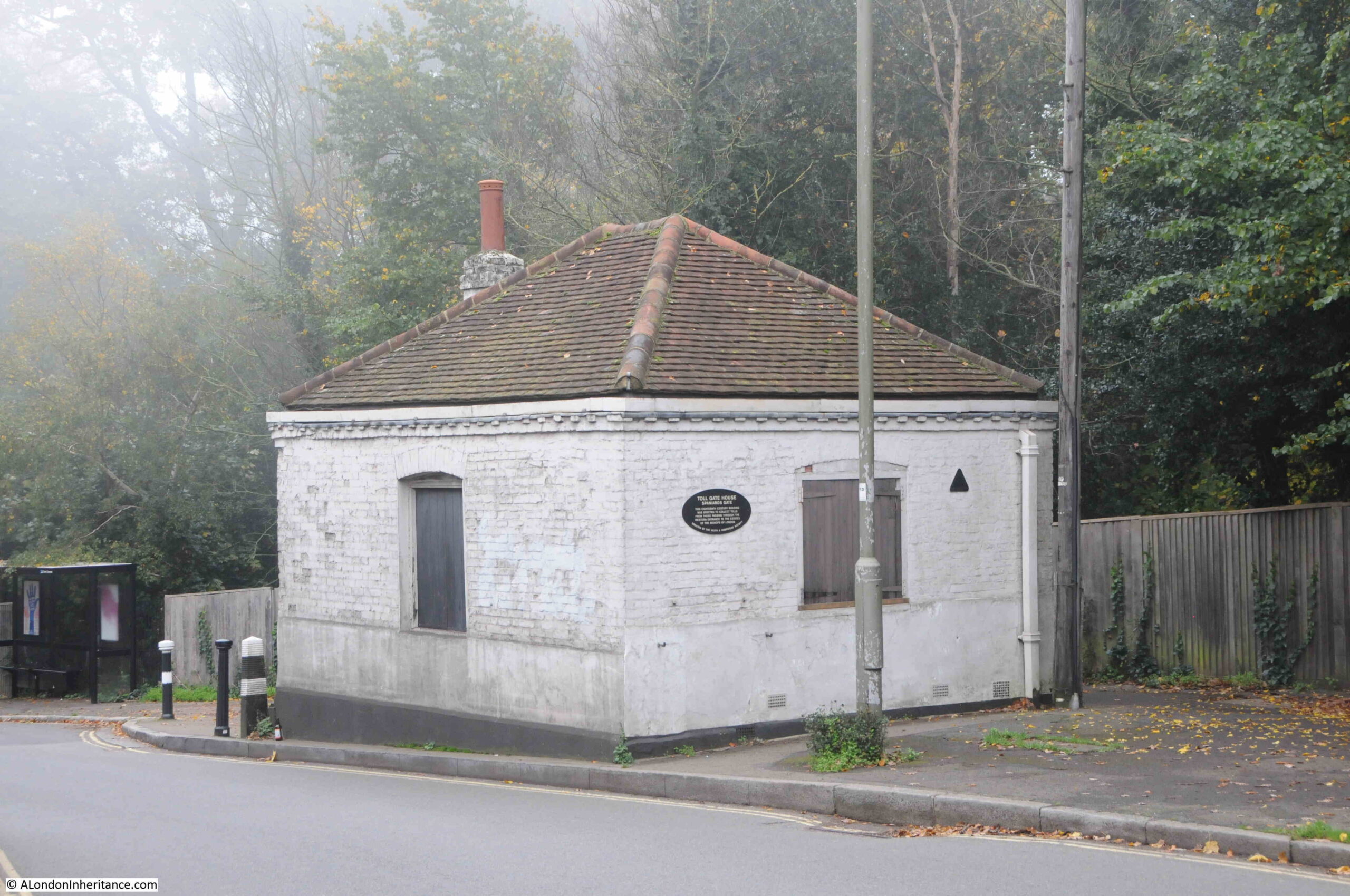
In the above photo, a black and white bollard can be seen at the corner of the building. This was installed in 2008 to provide some protection from the traffic that passes so close to the building.
It is Grade II listed, and the Historic England listing states that the building is inspected regularly and is in good condition.
Just behind the Spaniards Inn is one of the many large buildings that can be found across Hampstead. It is a challenge to walk any distance in Hampstead and not find a blue plaque, and my walk to the Spaniards was no exception.
The building has a blue plaque at the entrance, recording that Dame Henrietta Barnett and Cannon Samuel Barnett lived in the house and that Henrietta was founder of the Hampstead Garden Suburb.
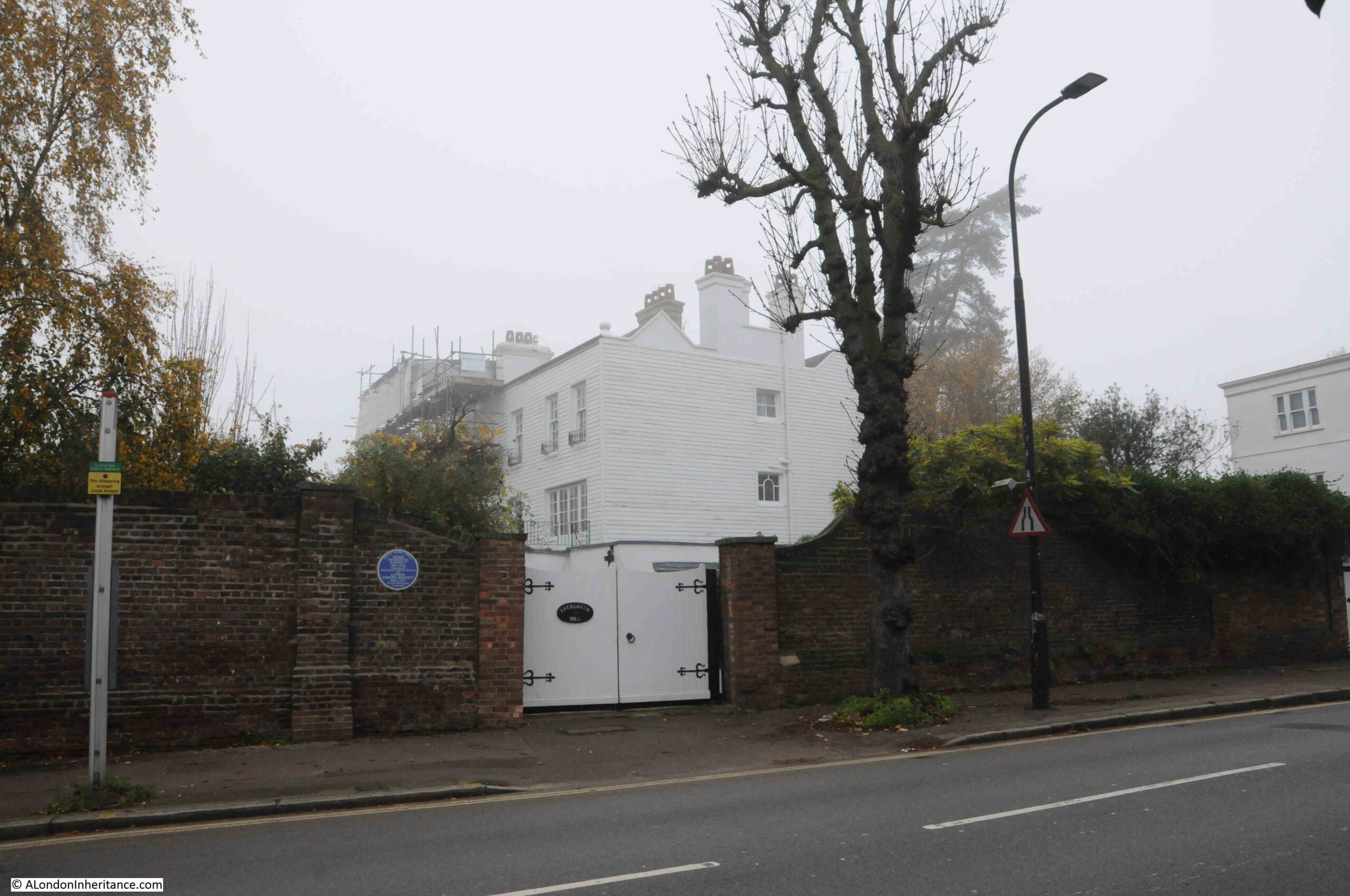
The Barnett’s were a married couple that had a significant impact on Hampstead, and on London. On her death in 1936, the Hampstead News dedicated a full page to her life, and the following is an introduction:
“Born 85 years ago, she dedicated herself at an early age to a life of social service. When she was 21 she married Canon S.A. Barnett, who had just been become Vicar of St. Jude’s Whitechapel. This was a very poor district affording ample scope for her unusual abilities and unbounded energy, and she at one threw herself into parish work. In 1875 she was appointed manager of the Forest Gate District School, holding this position until 1897, and from 1876 to 1898 she was honorary secretary of the Metropolitan Association for Befriending Young Students. During this period she found time to engage in promoting homes for workhouse and feeble-minded girls.
It was Mrs. Barnett who started the Children’s Country Holiday Fund, and in 1884 she founded the London Pupil Teachers Association, of which she was President from 1891 to 1907. She also put in much hard work as a member of the committee which formed the Whitechapel Art Gallery.
In 1883 a number of undergraduates from Oxford and Cambridge came, at the suggestion of Mrs. Barnett to live in Whitechapel during the vacations. From this Toynbee Hall developed, and Mrs. Barnett helped her husband enthusiastically in this new field. She later introduced the settlement system in America with great success.
It is, however, as the founder of the Hampstead Garden Suburb that she will be best remembered, at any rate in North West London. Her aim was to establish a healthy community in beautiful surroundings, coupled with architecture and town planning on artistic lines, in a way which did not limit these advantages to the wealthier classes. She formed the Hampstead Garden Suburb Trust, and building was commenced in 1907. All who live in north-west London know what the ‘suburb’ is today.”
The Hampstead Garden Suburb Trust is still in existence, and looks after the more than 5,000 properties and 880 acres of the estate.
Three buildings with some fascinating history. The Barnett’s house, the Spaniards Inn and the toll gate house, all at this historic crossing point between Hampstead and Highgate, and the original western boundary of the Bishops of London land. A boundary that can still be seen on the street today.
Hopefully, both the Spaniards Inn and the toll gate house will still mark the boundary for very many years to come.

